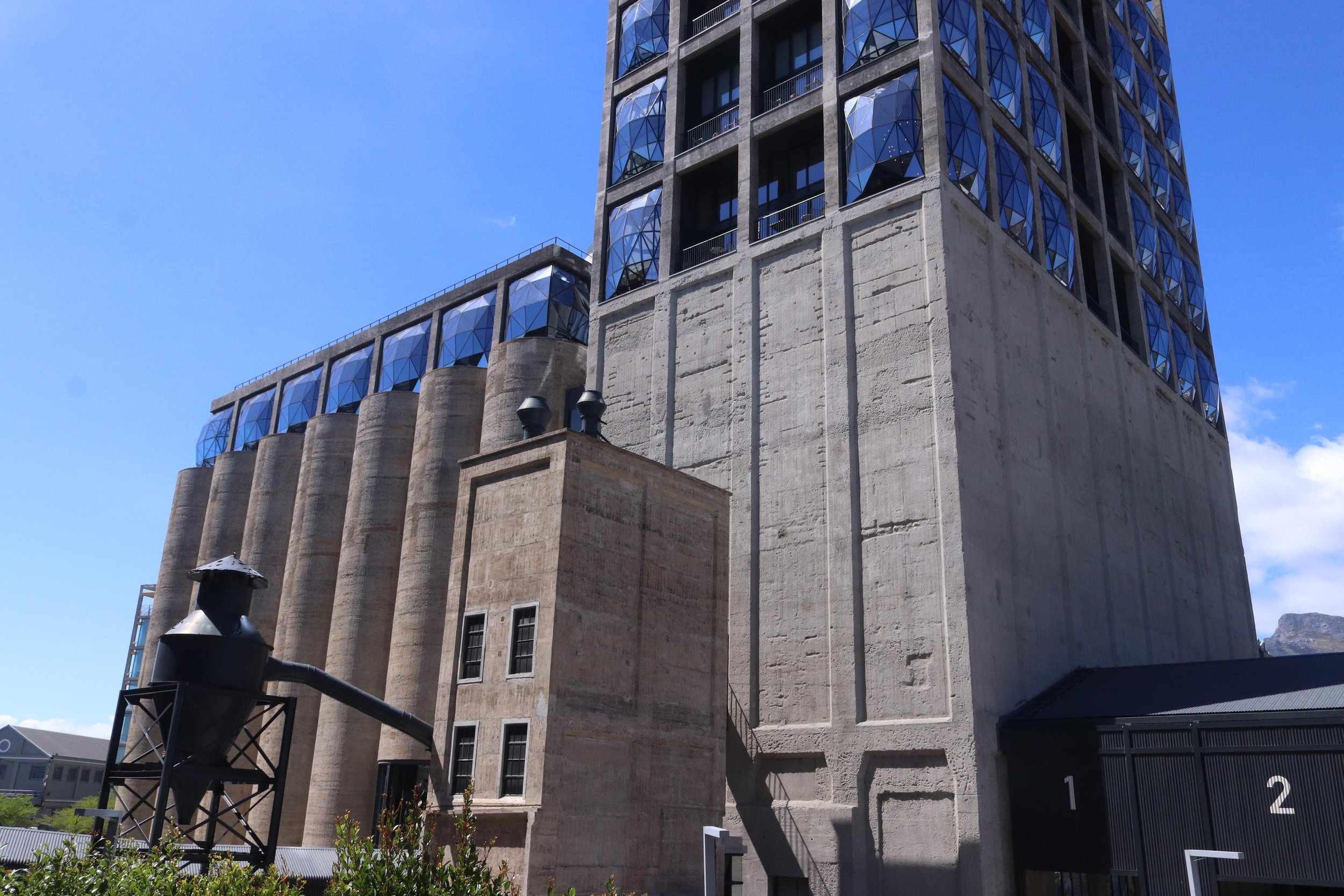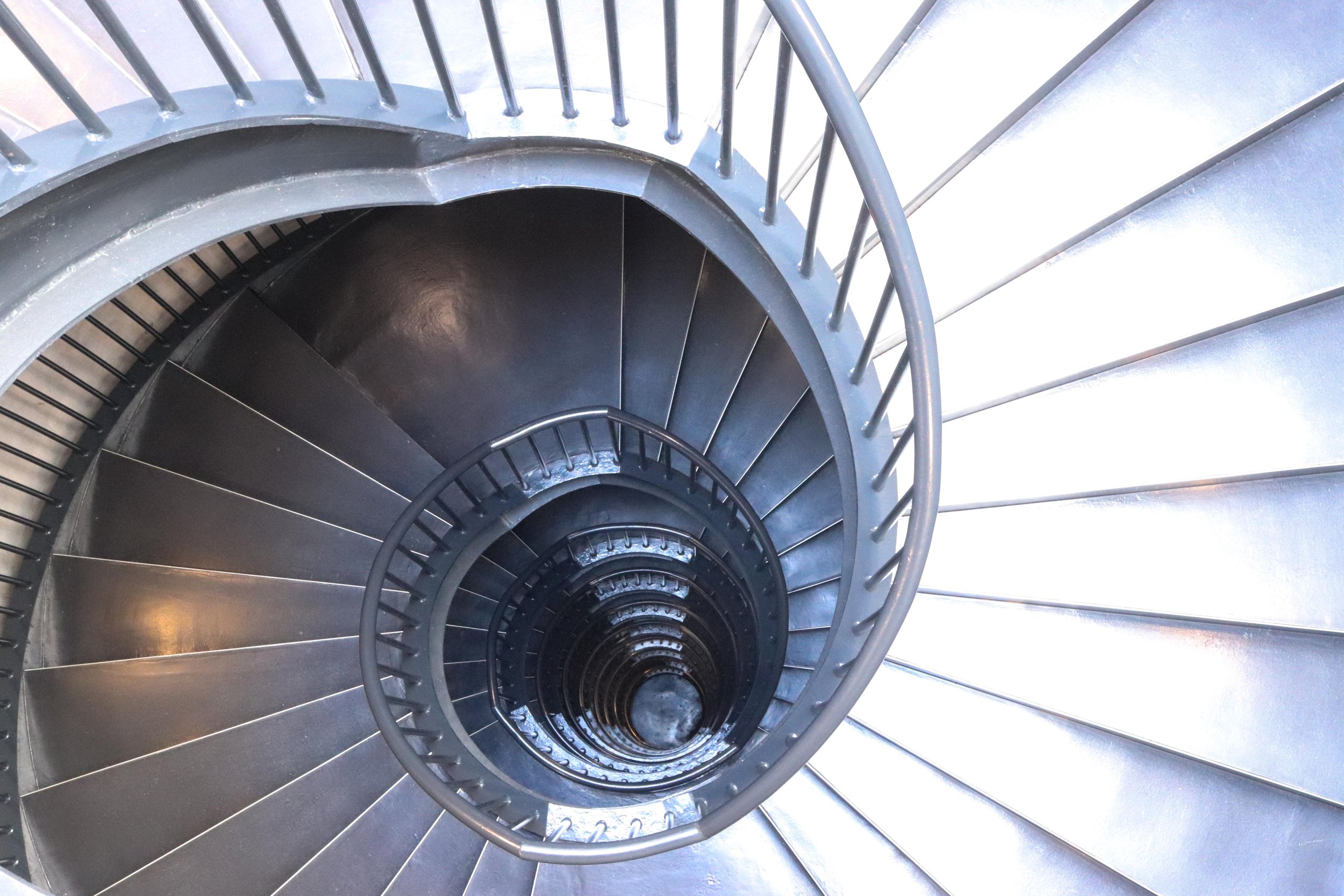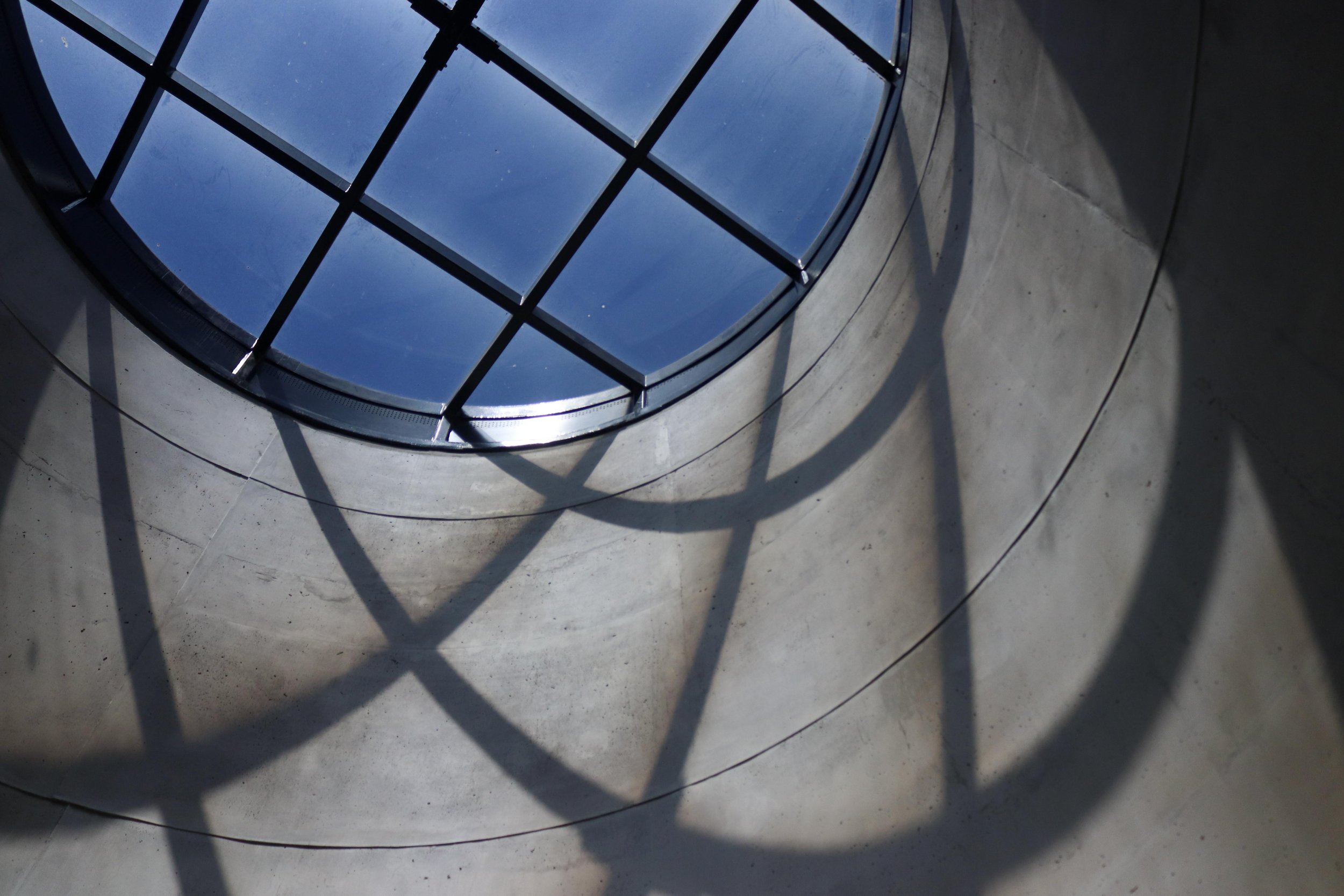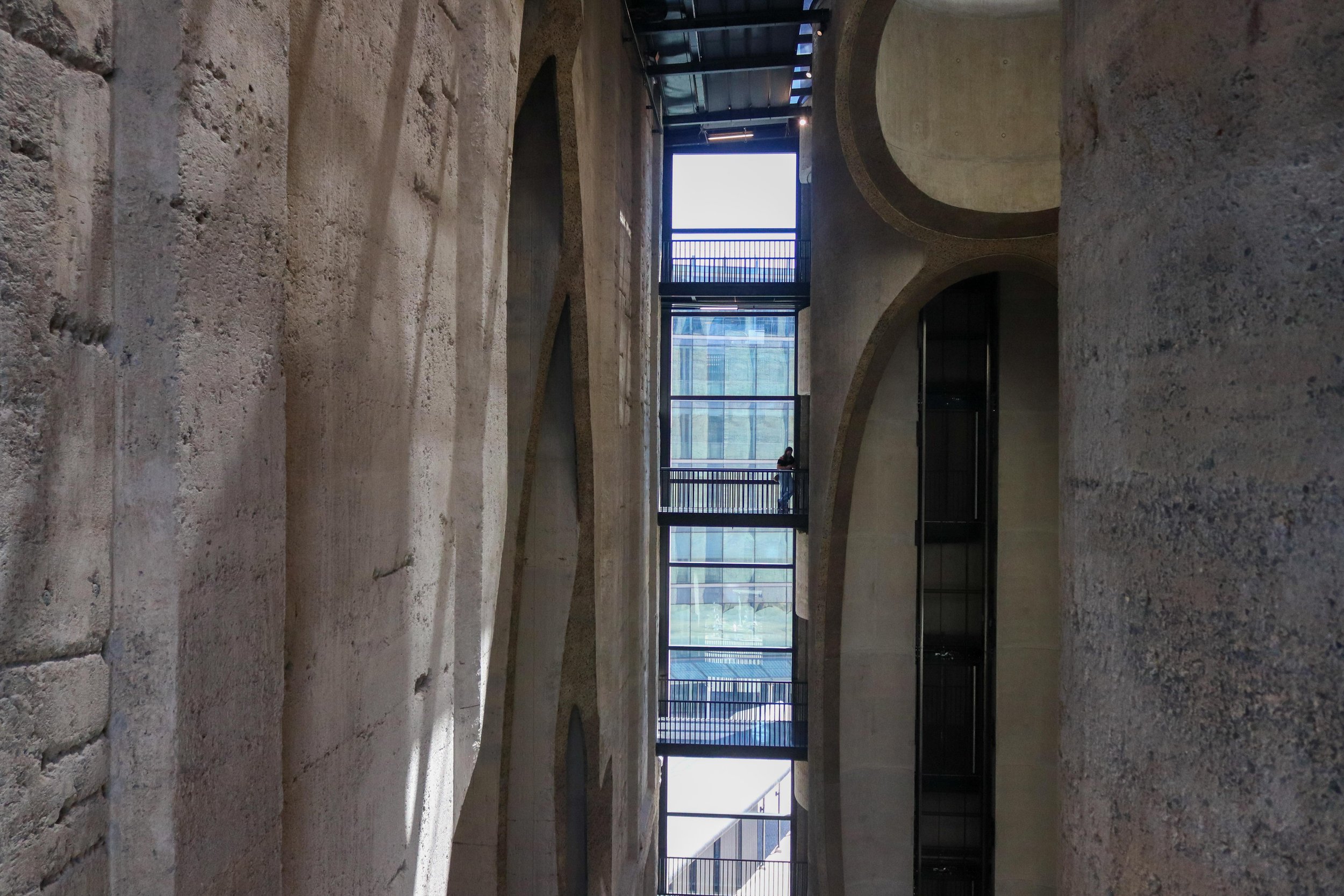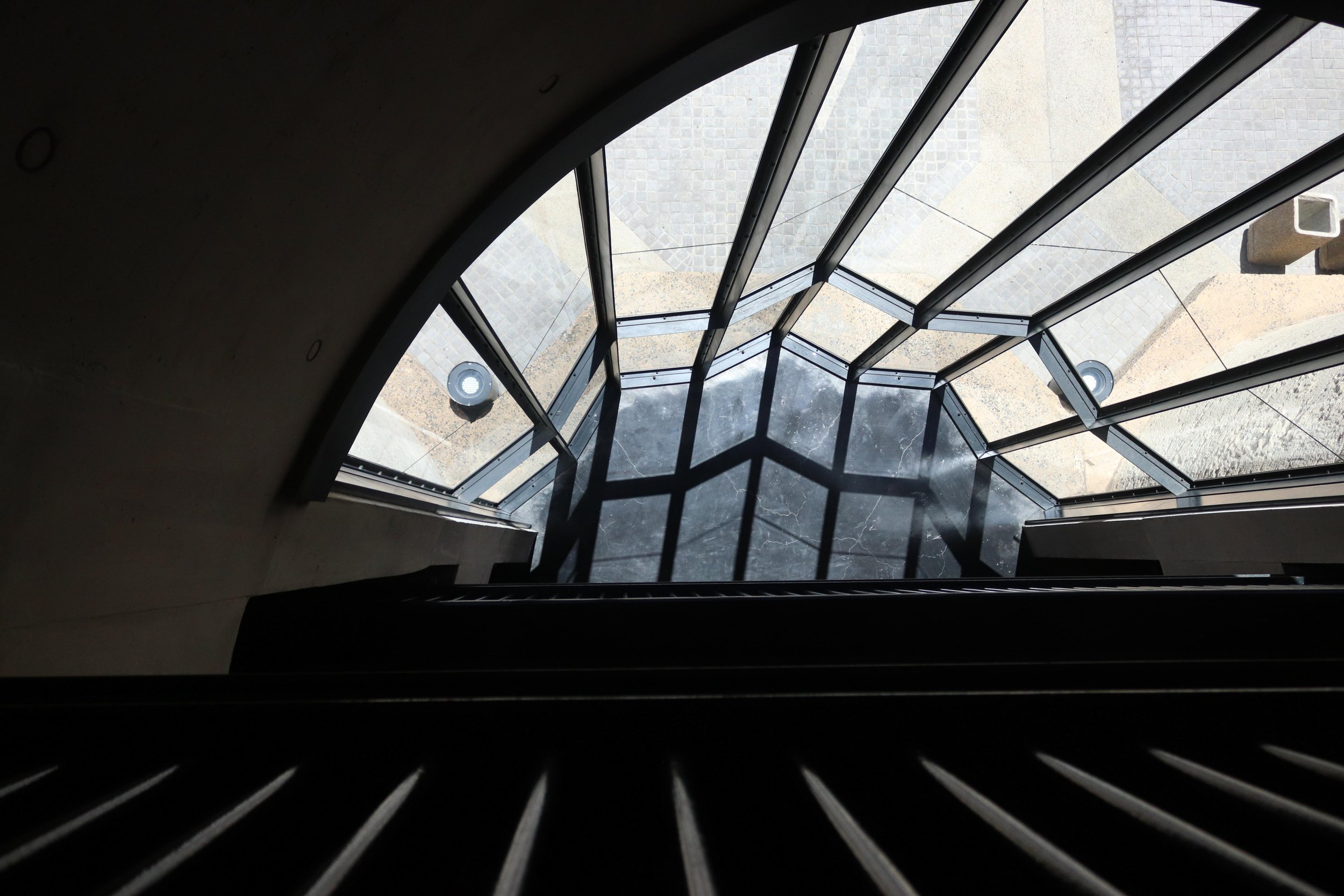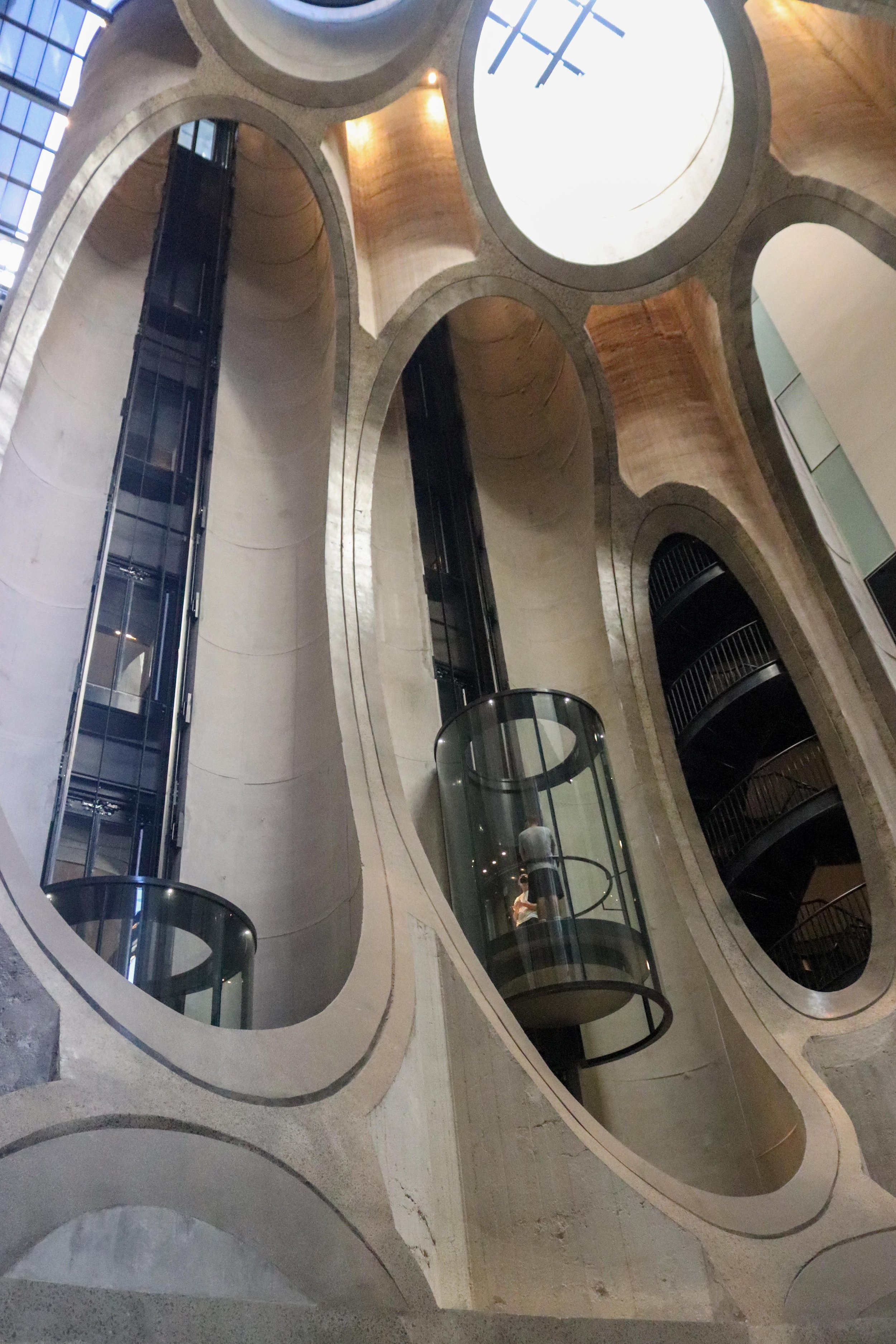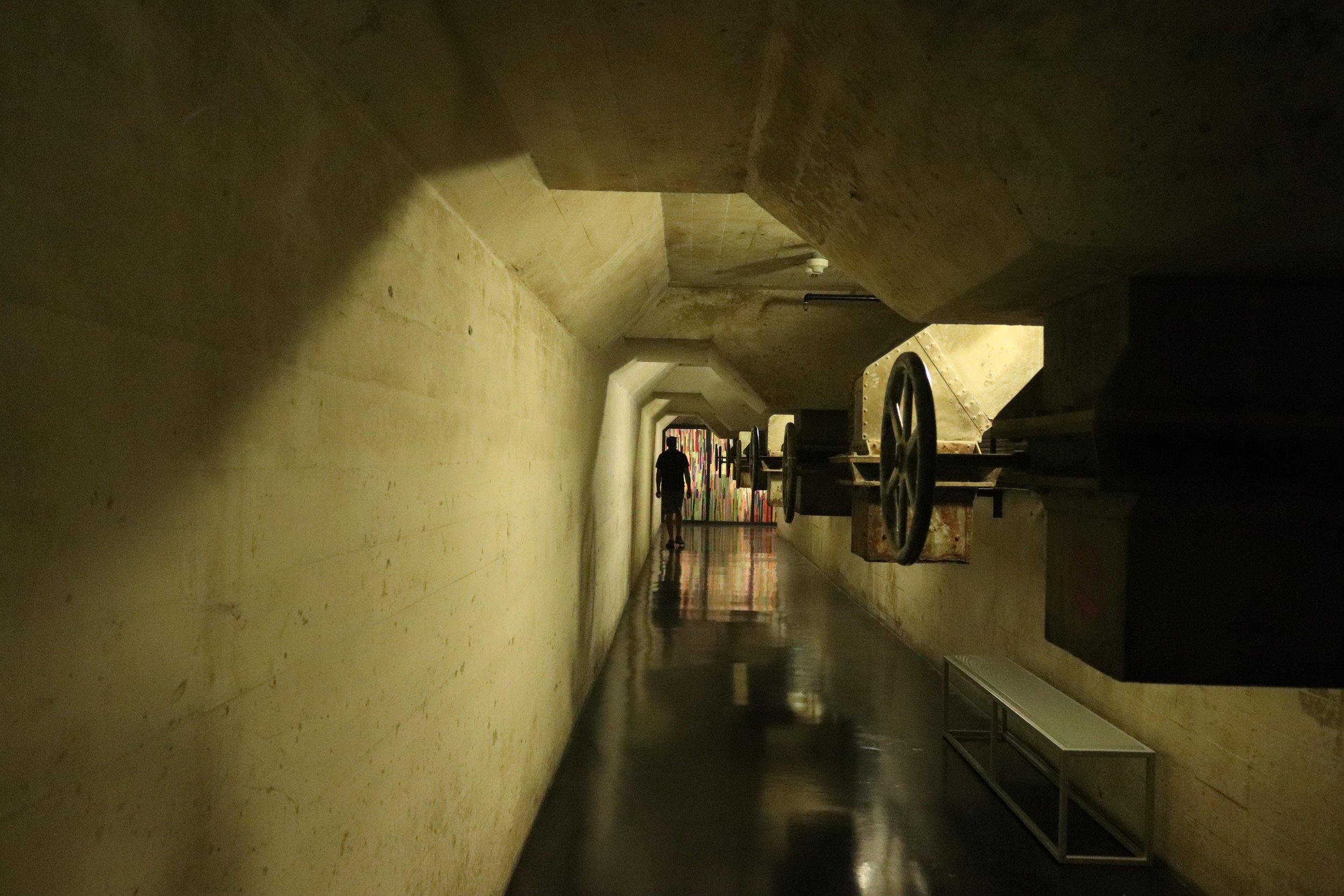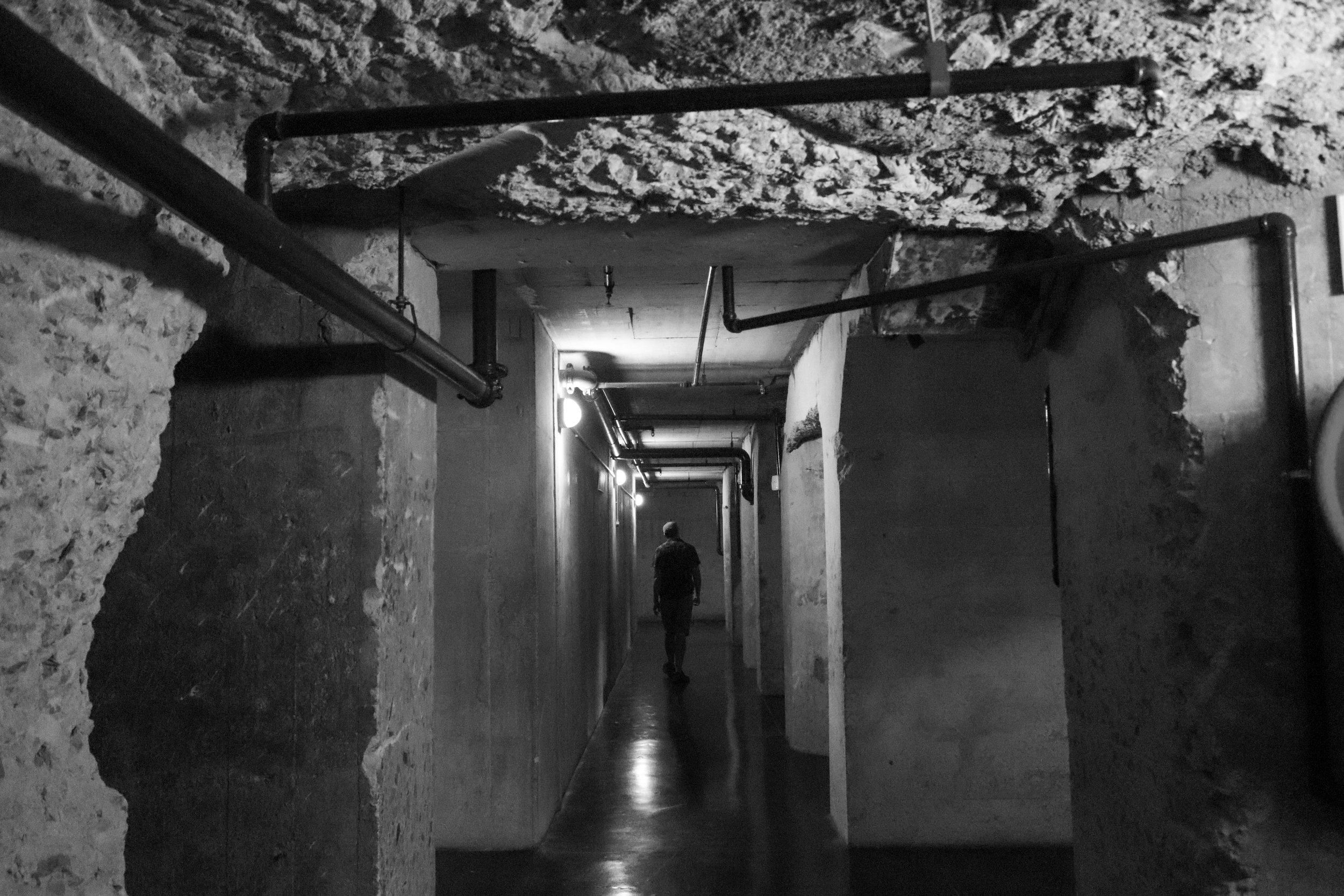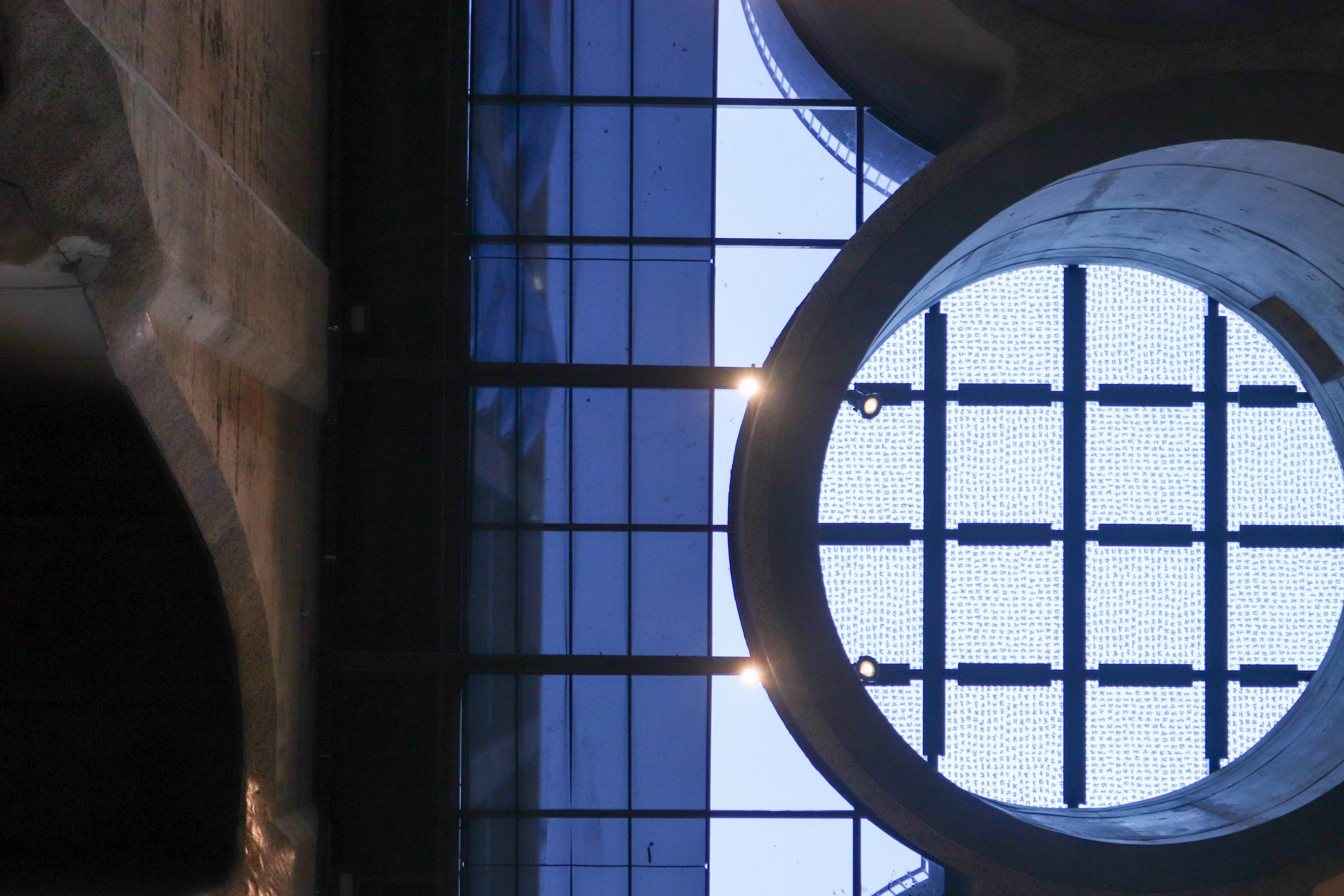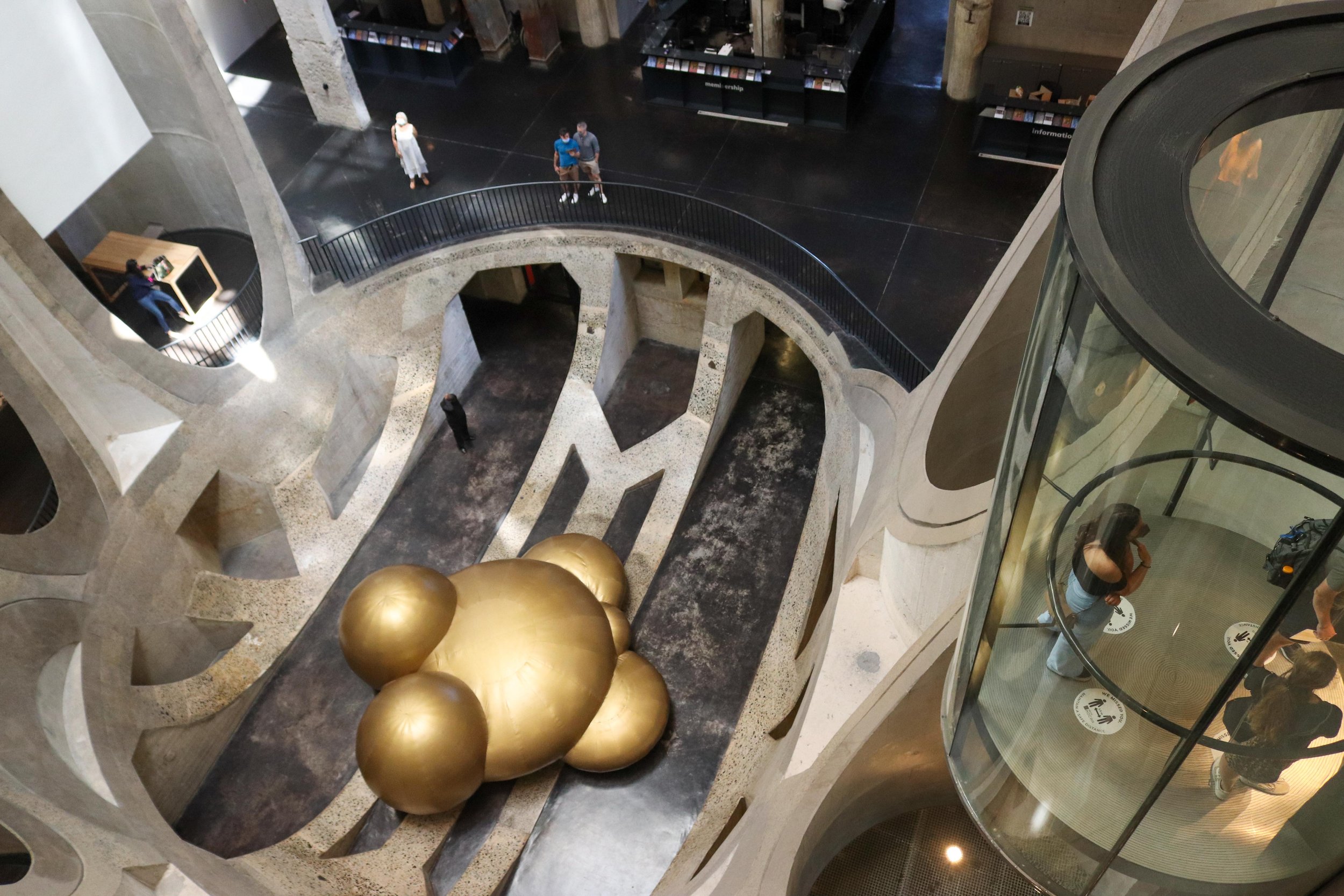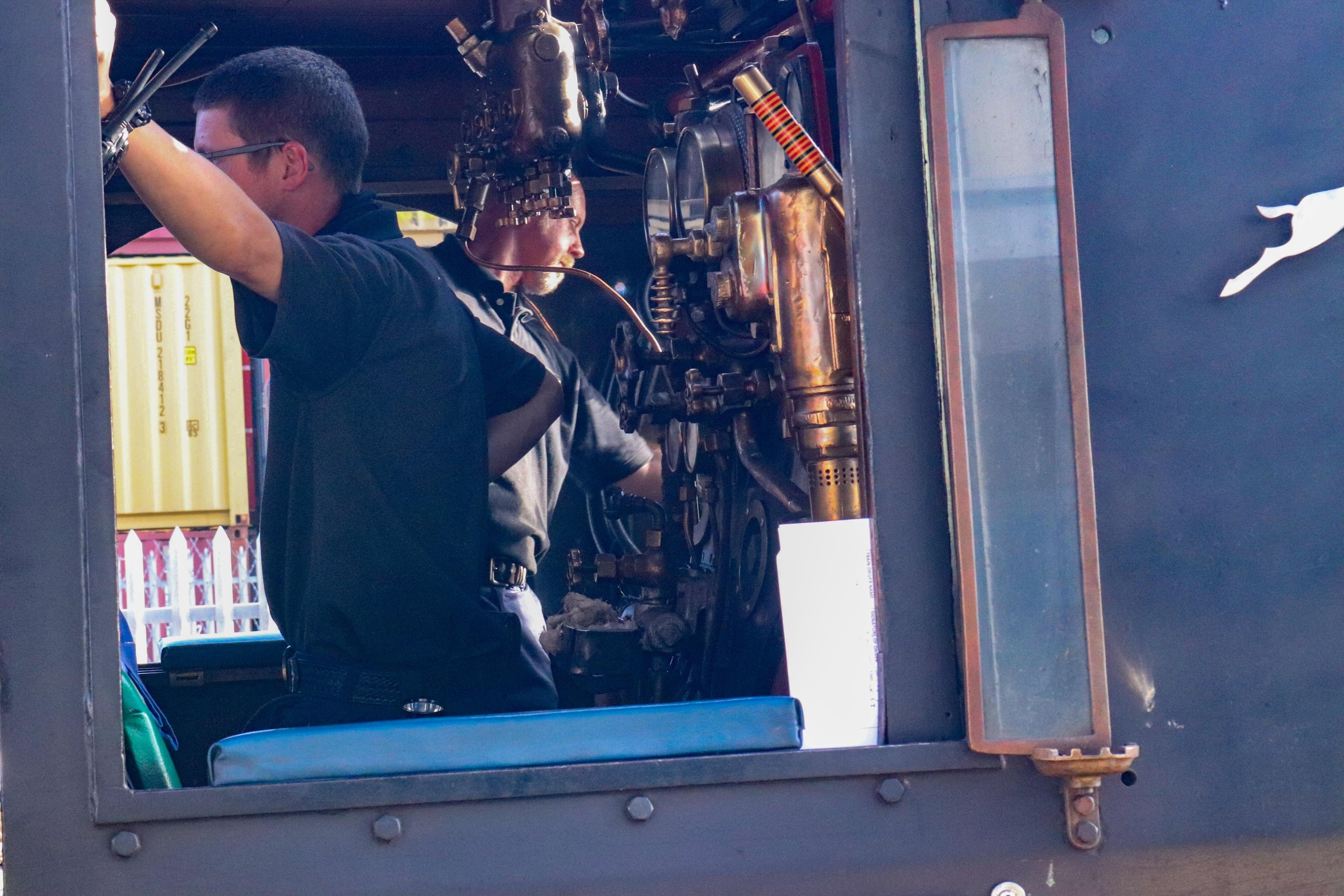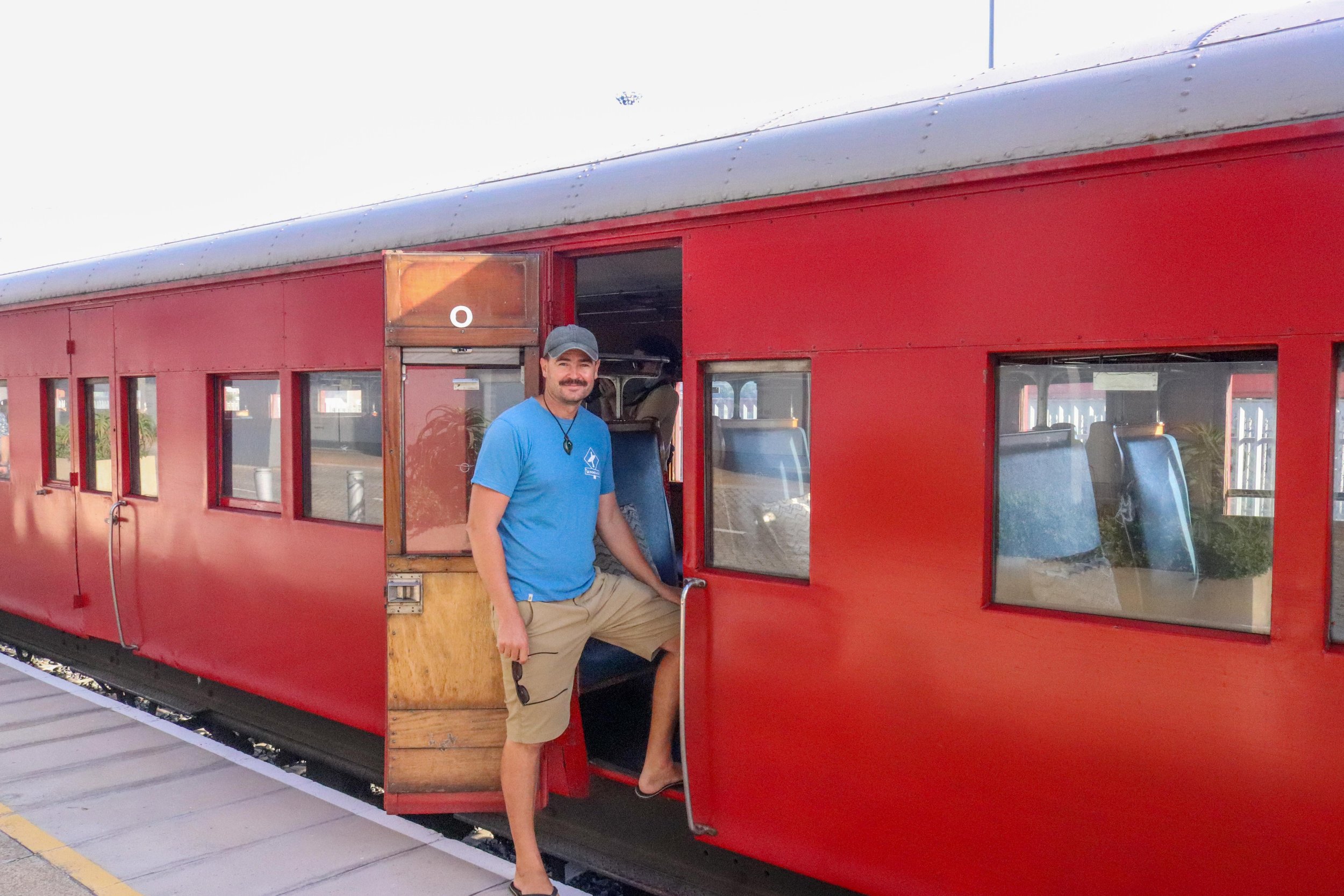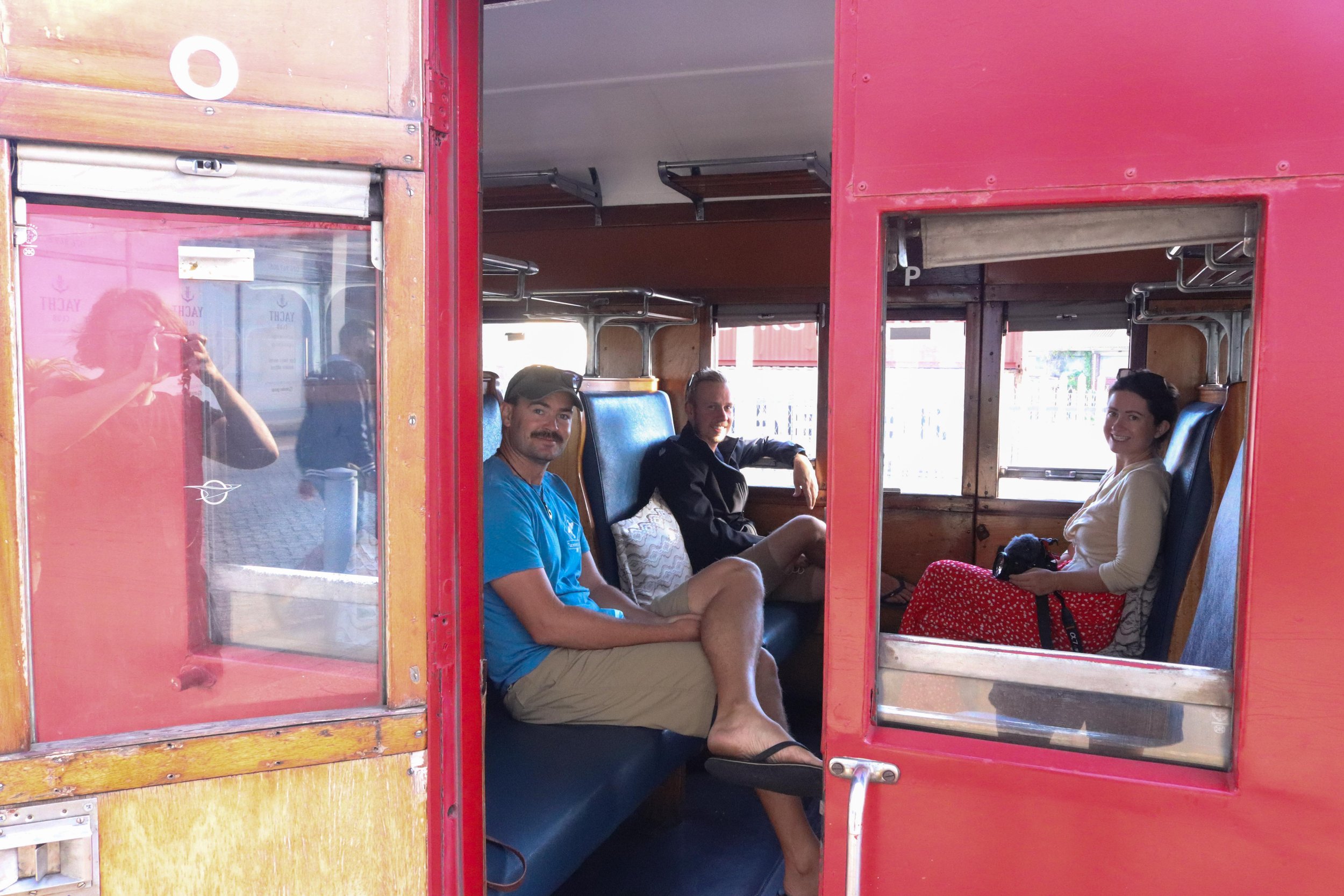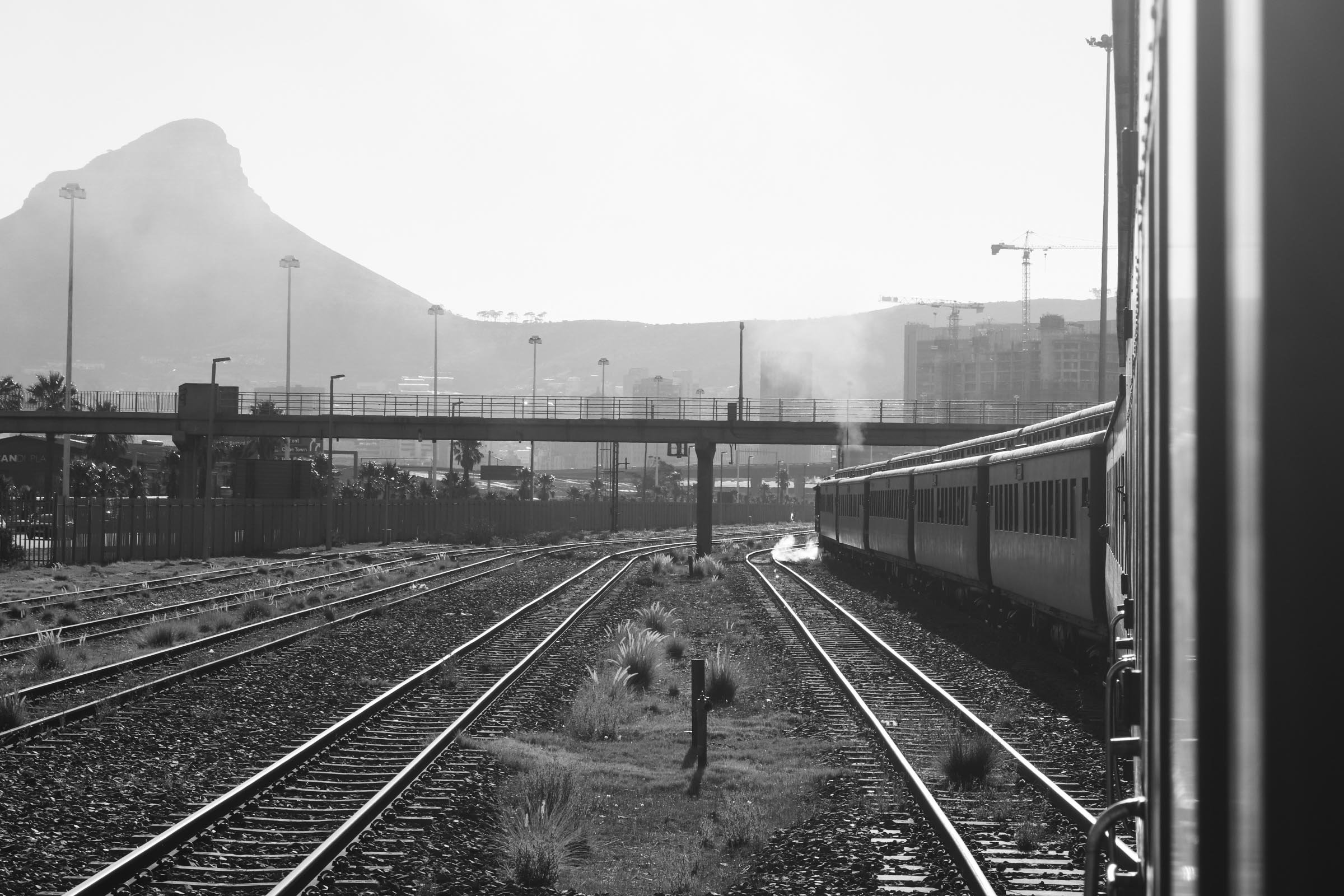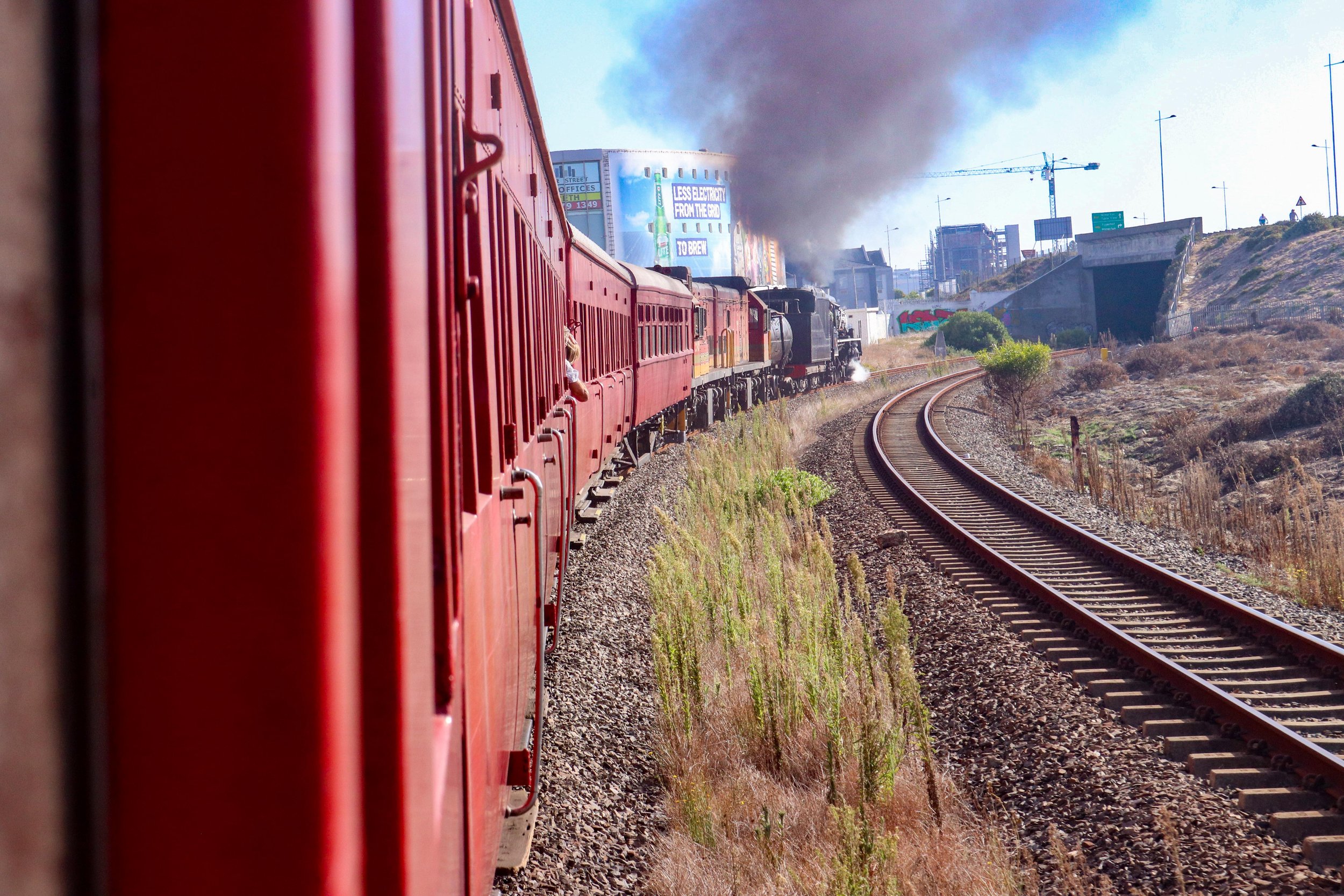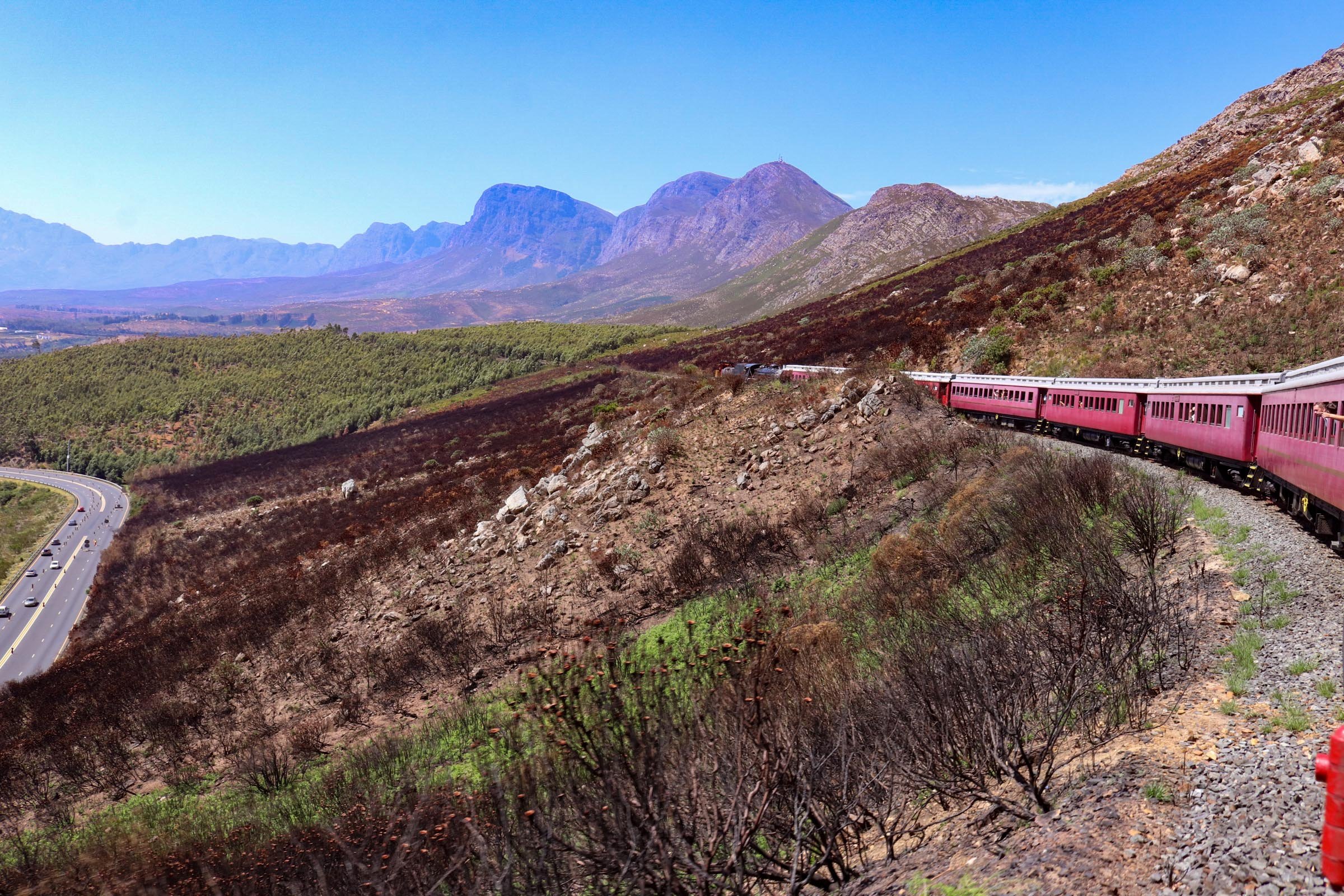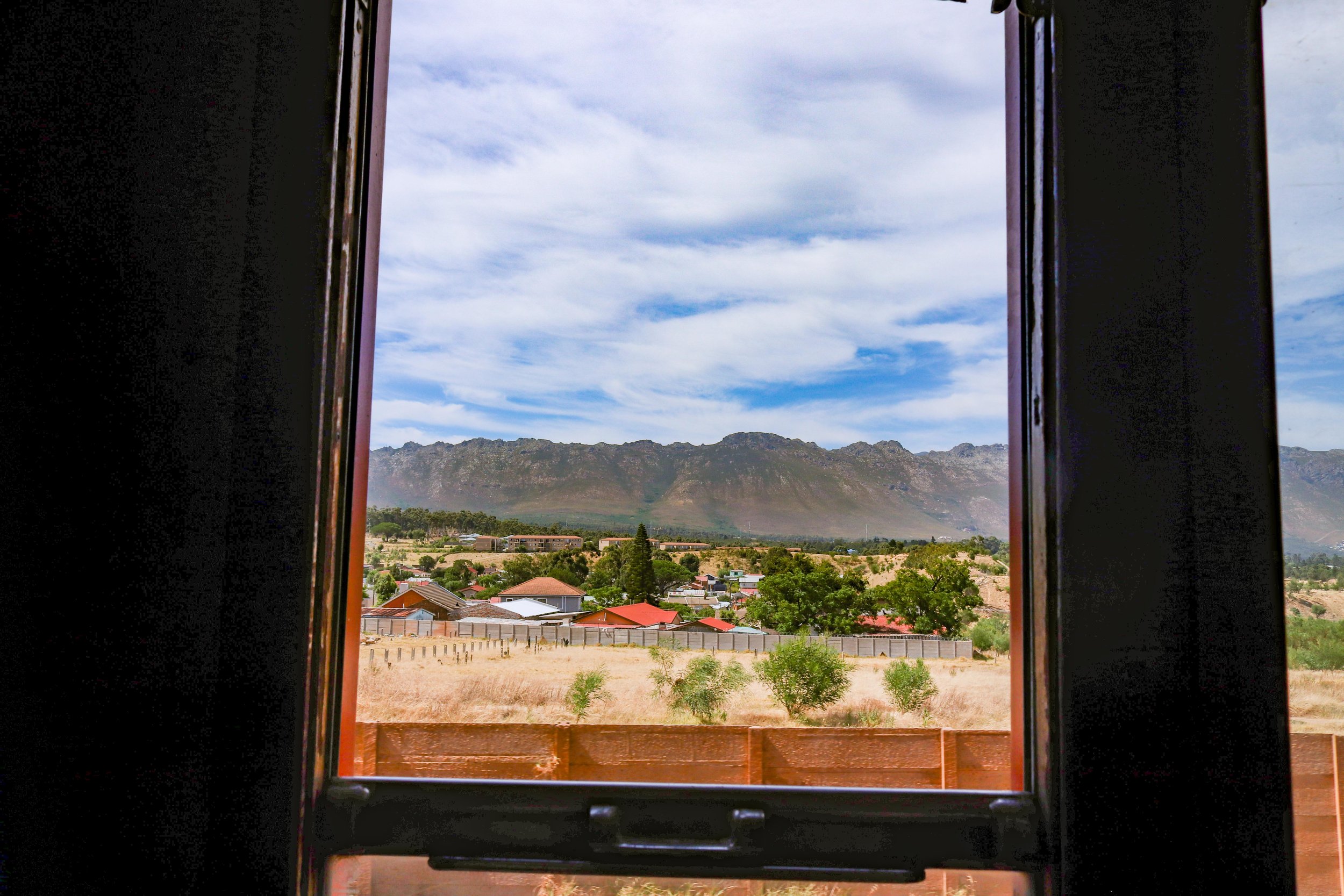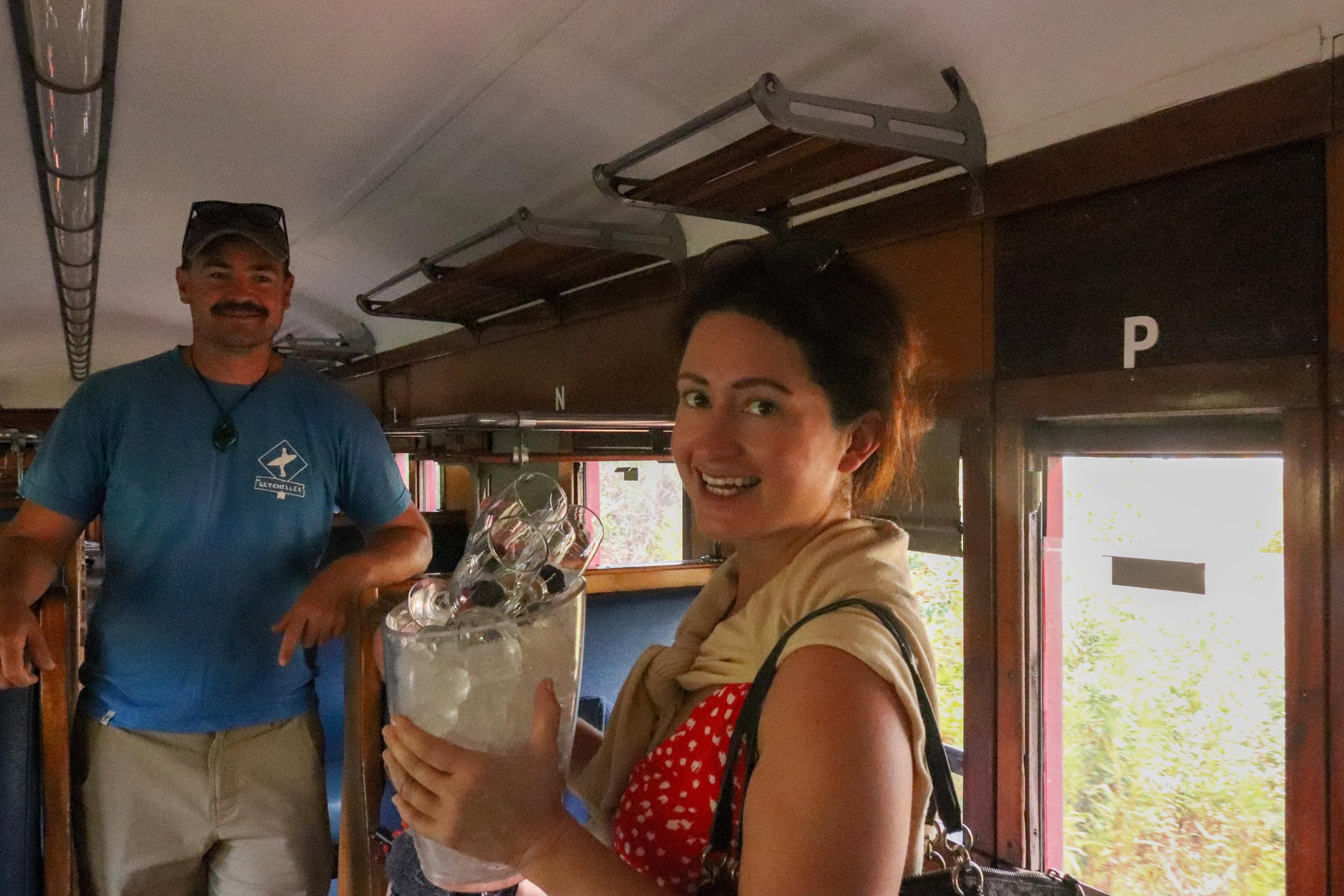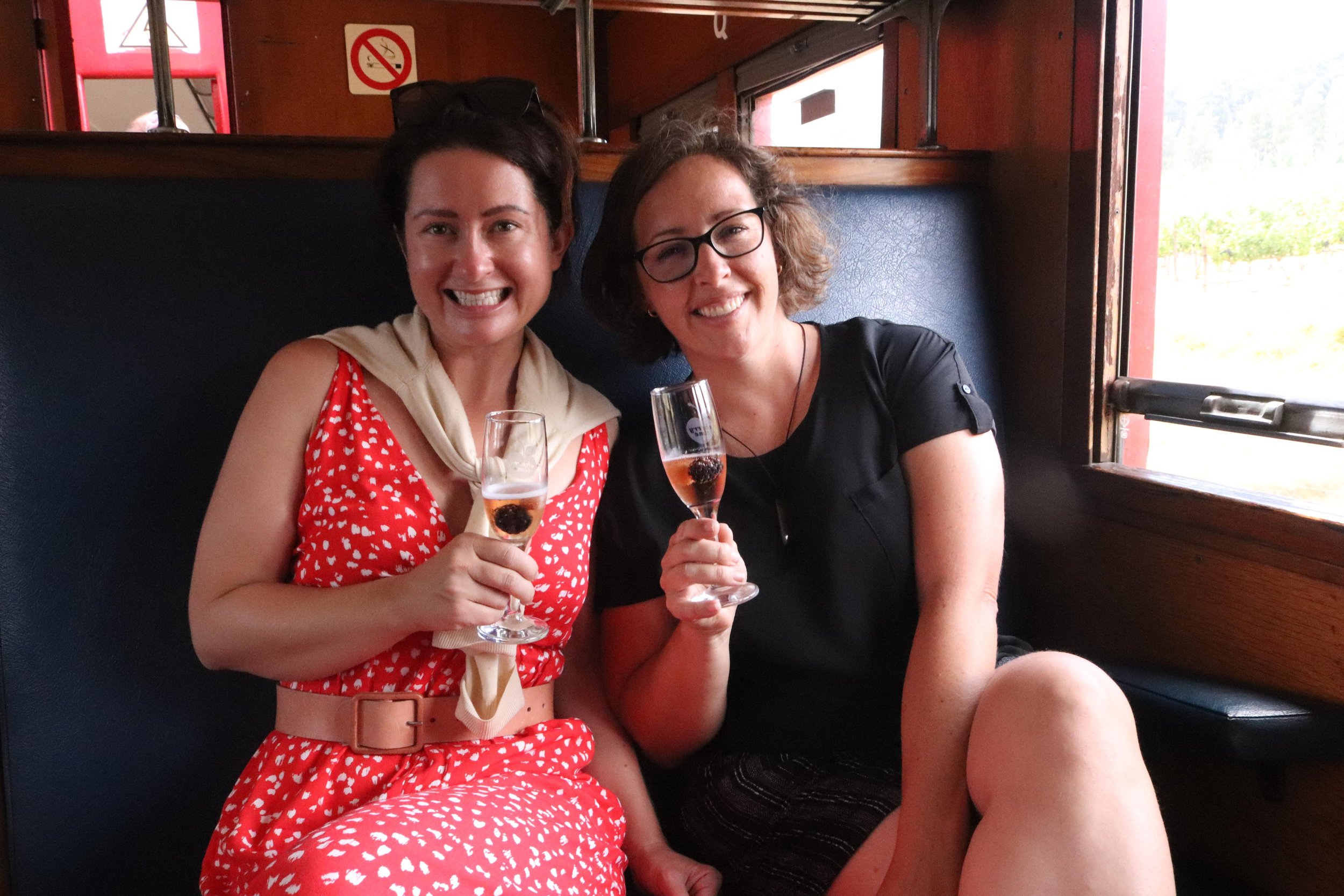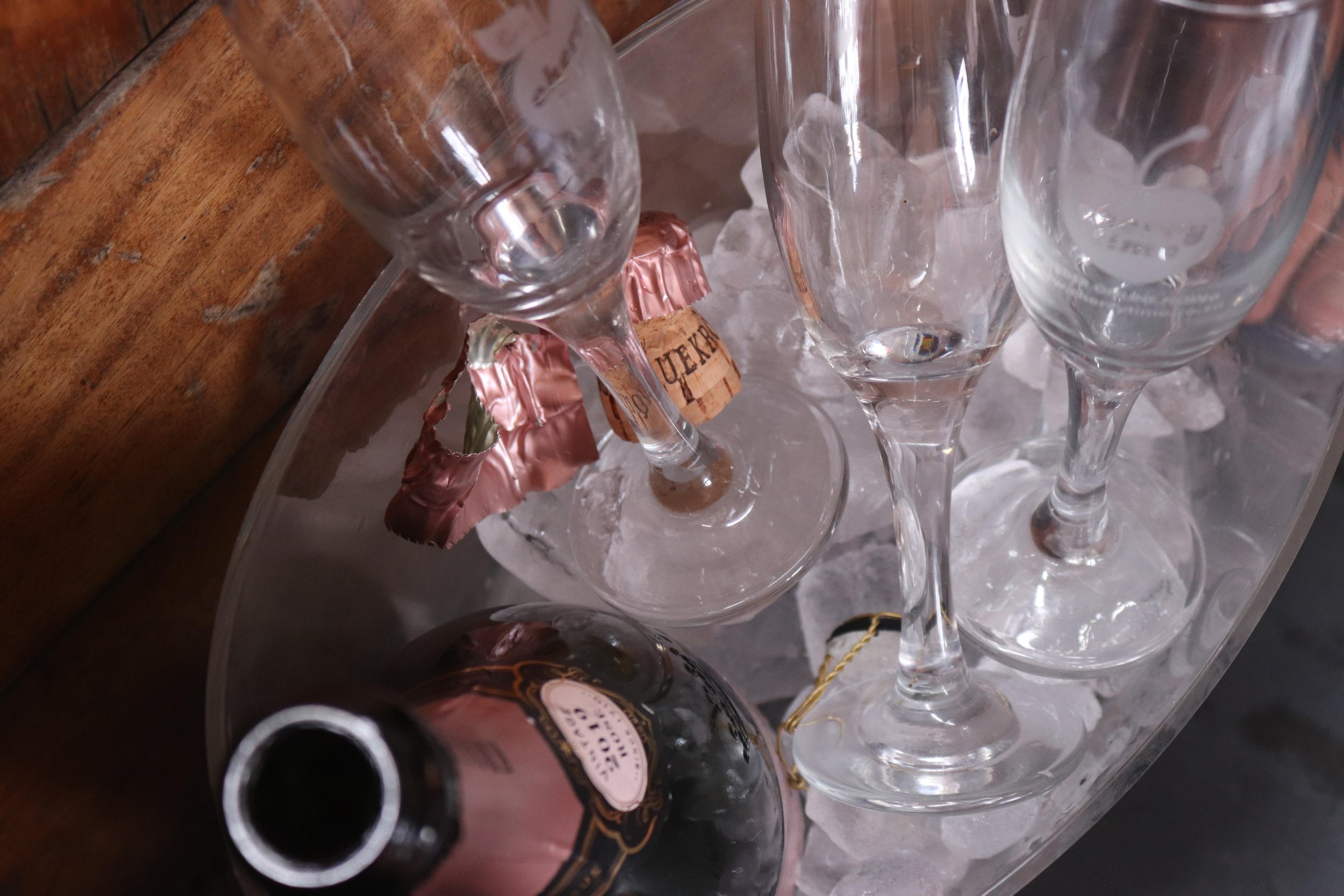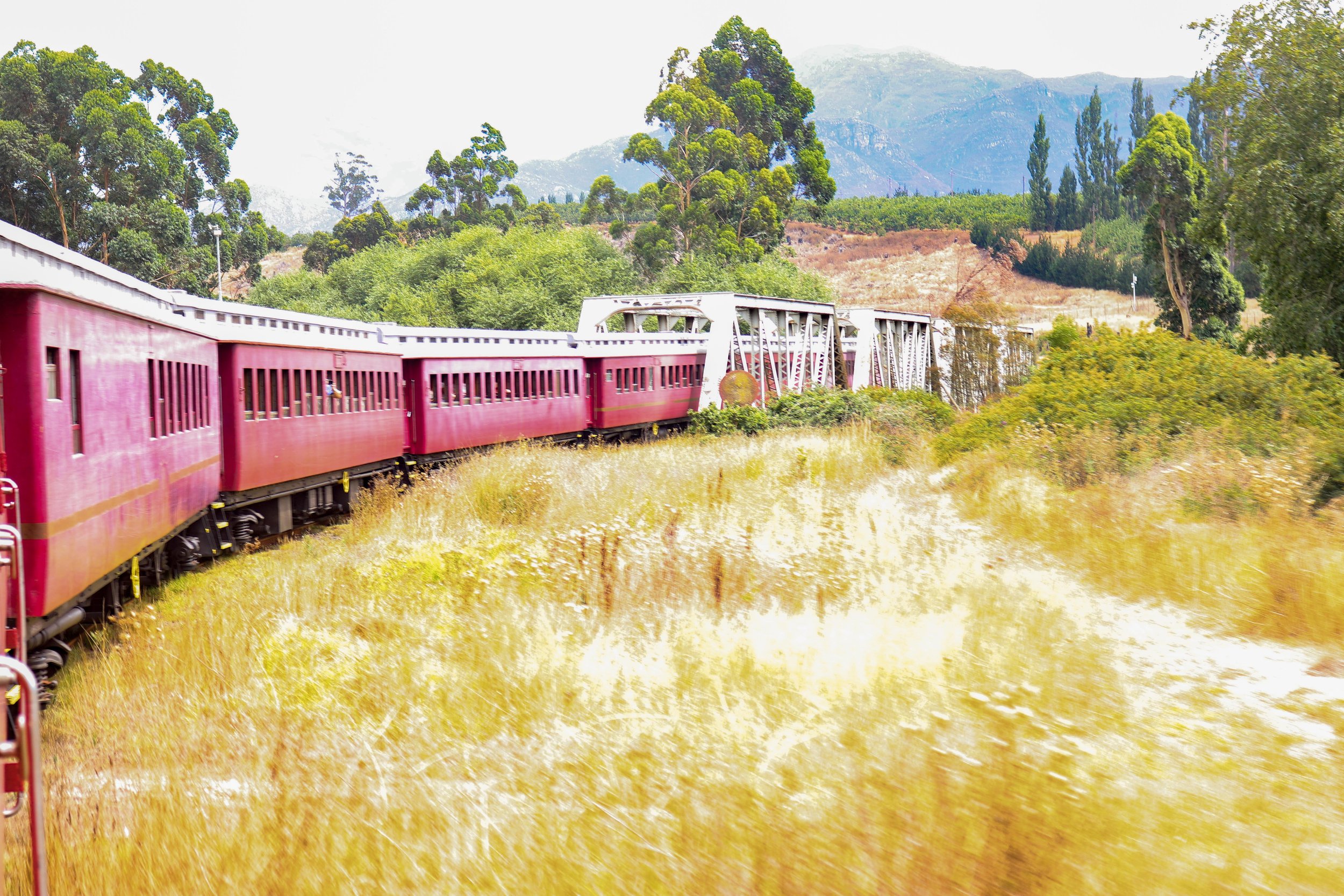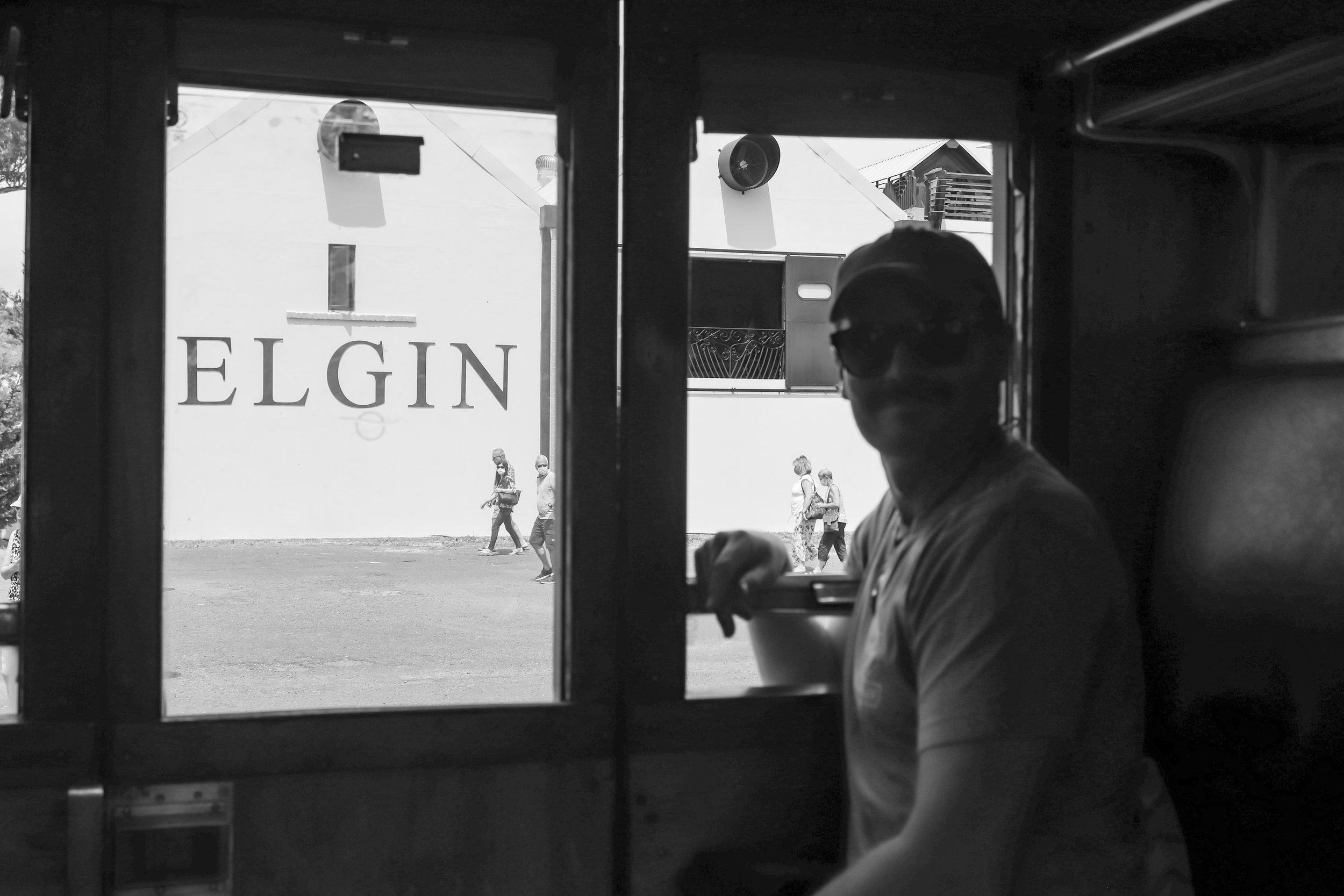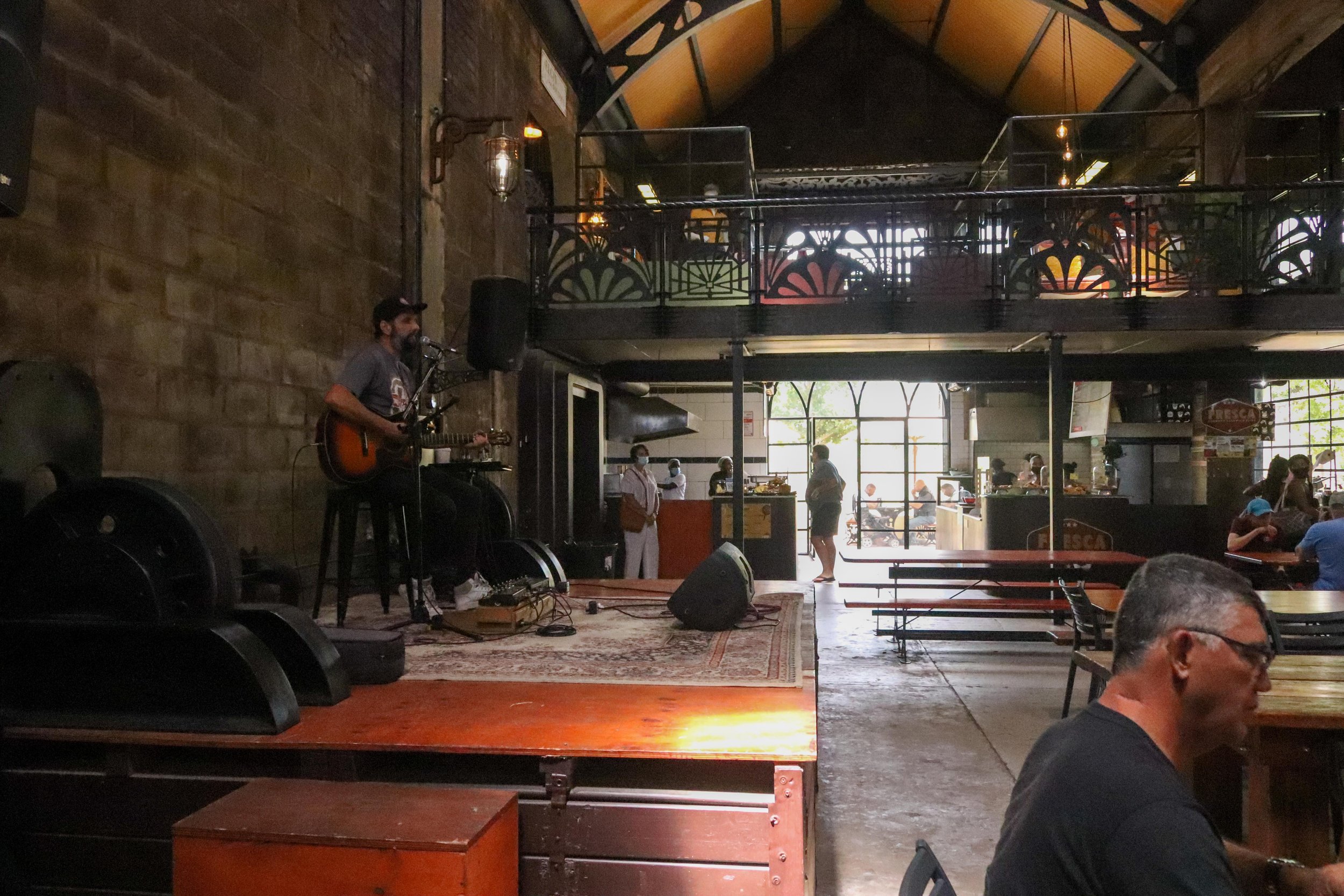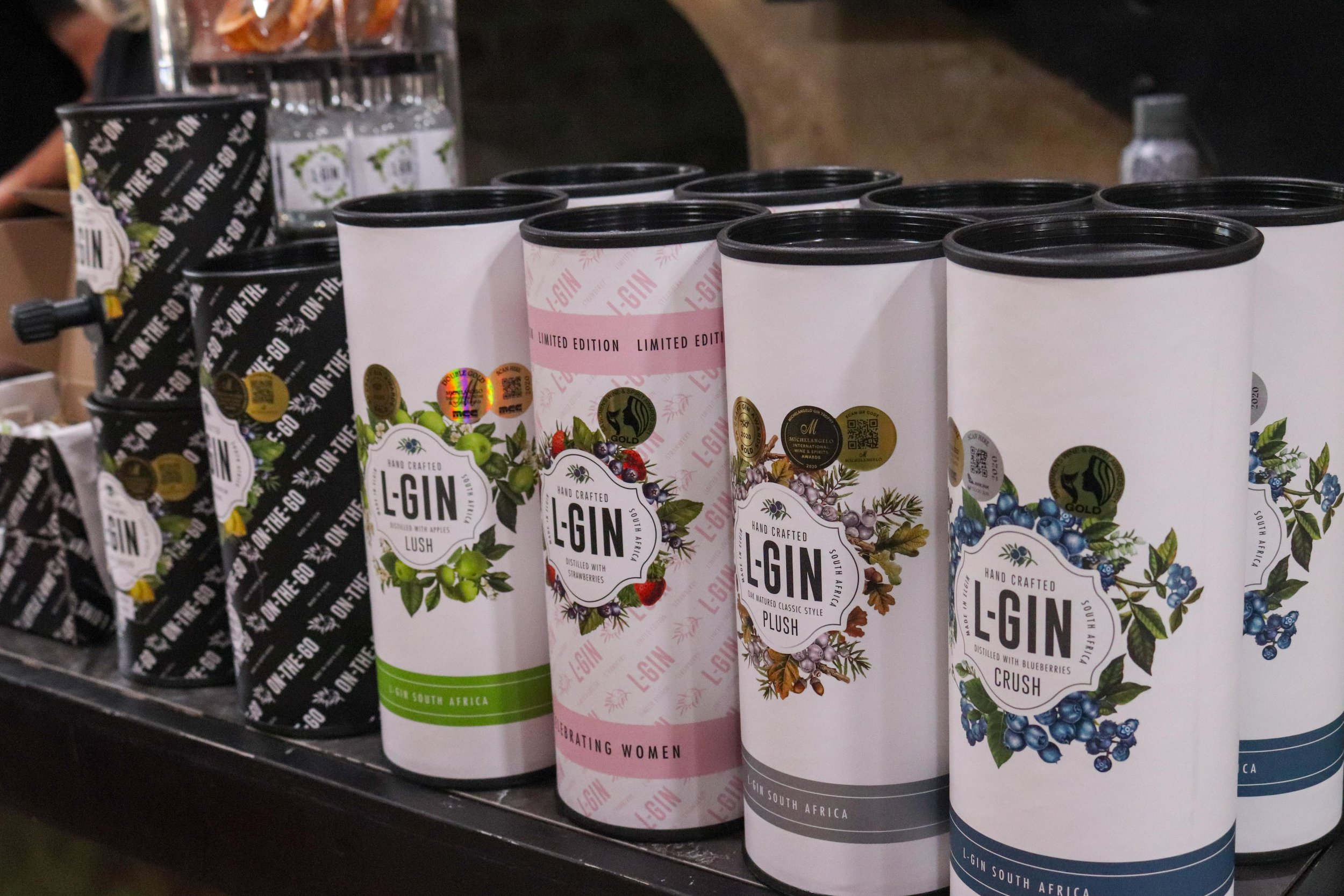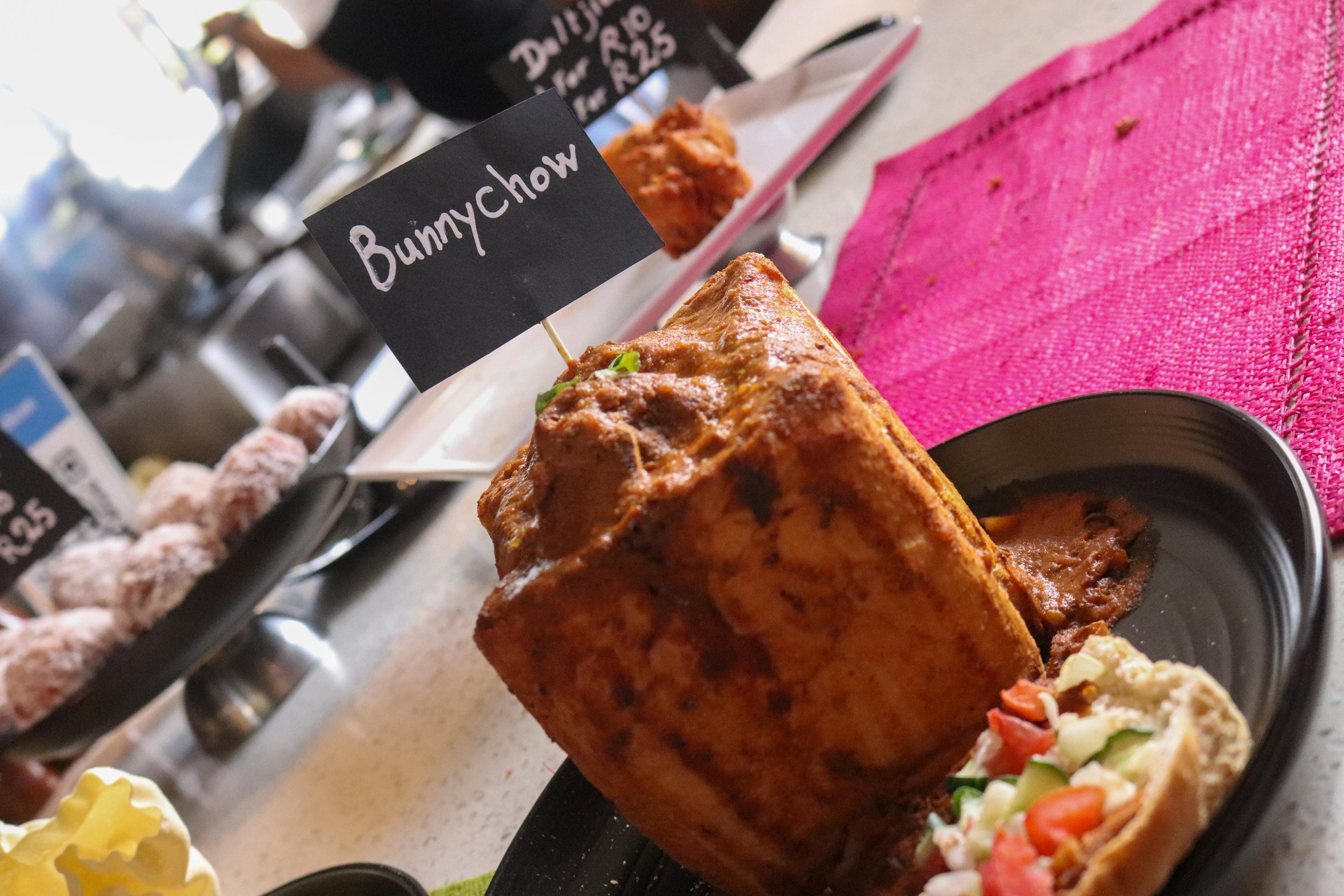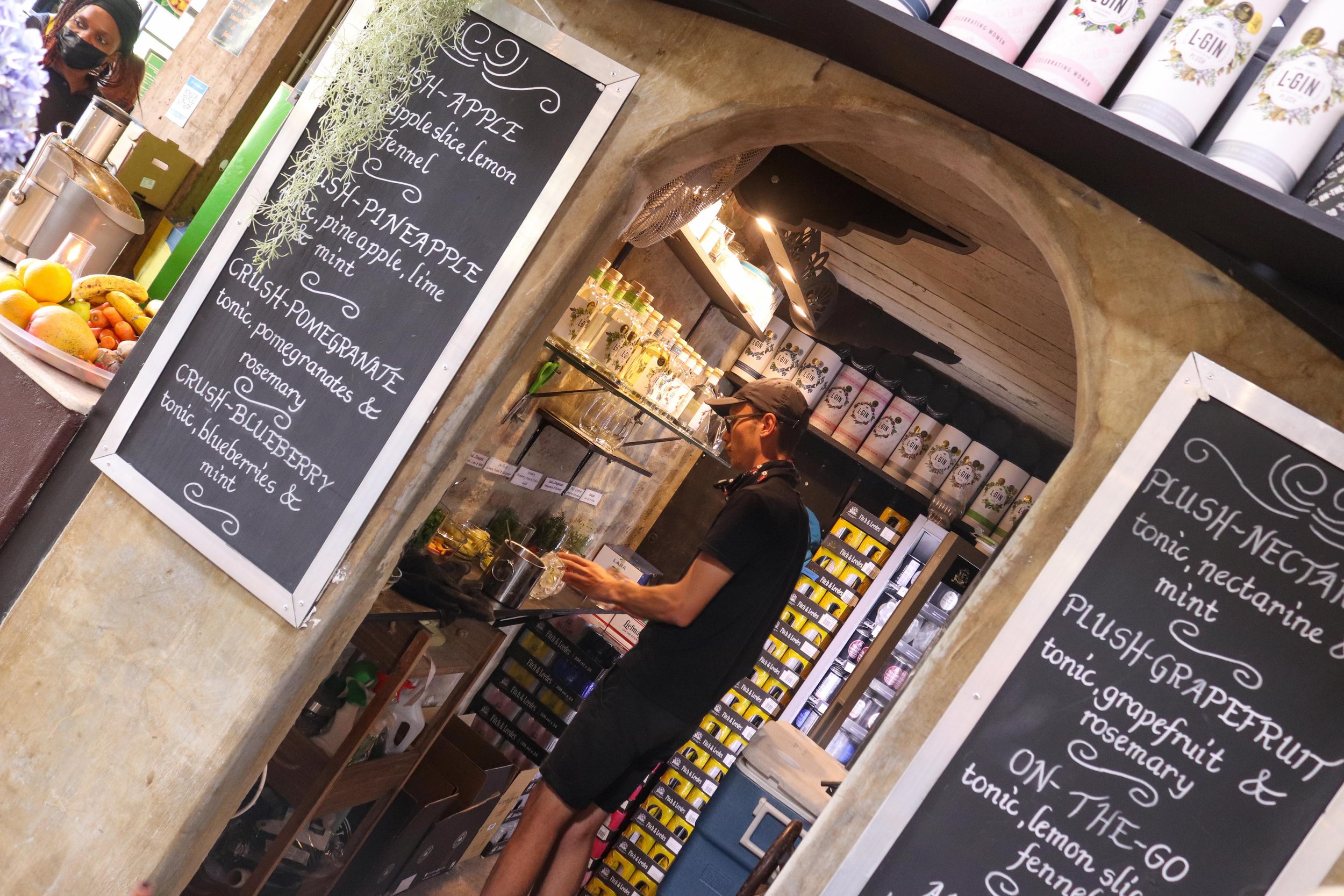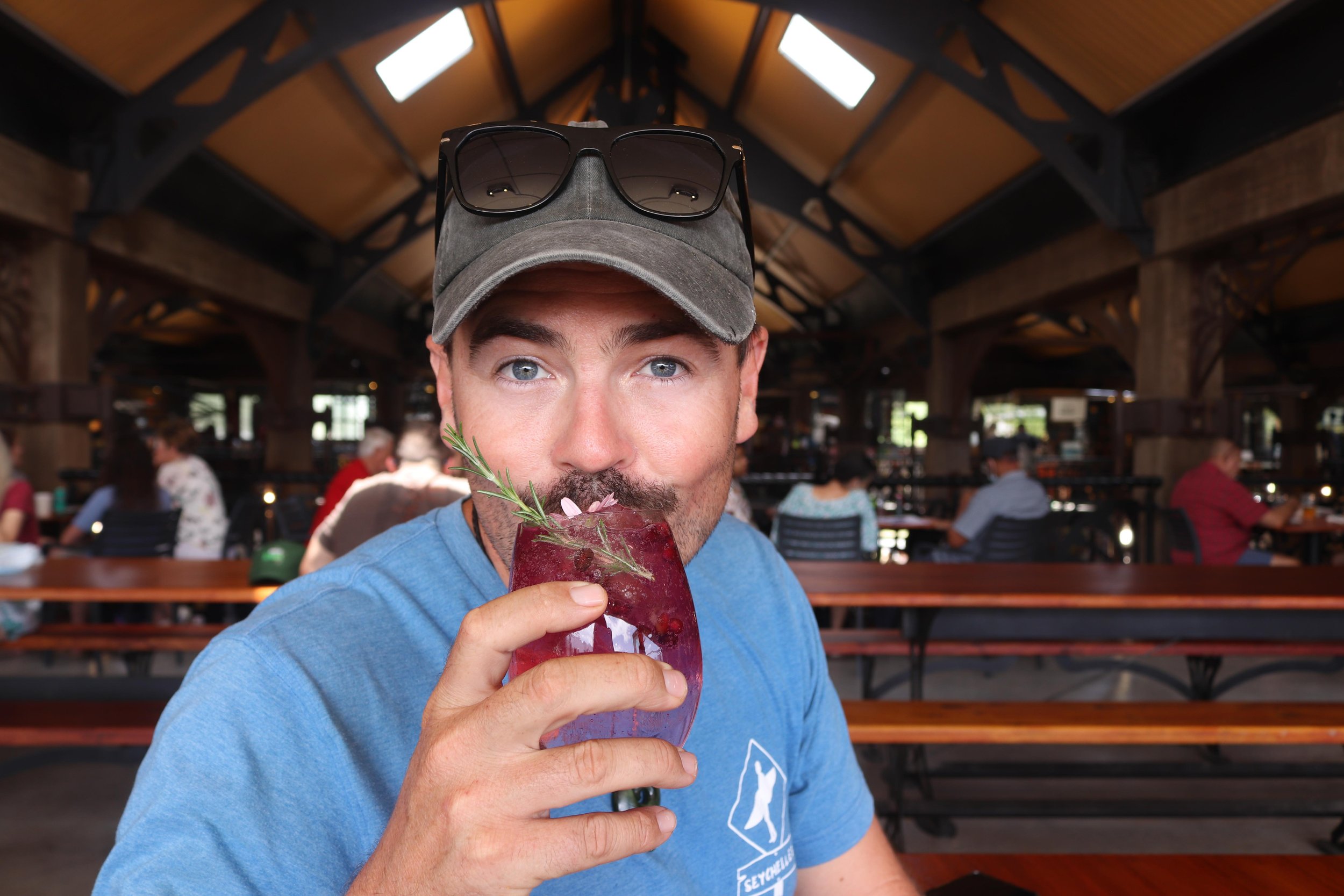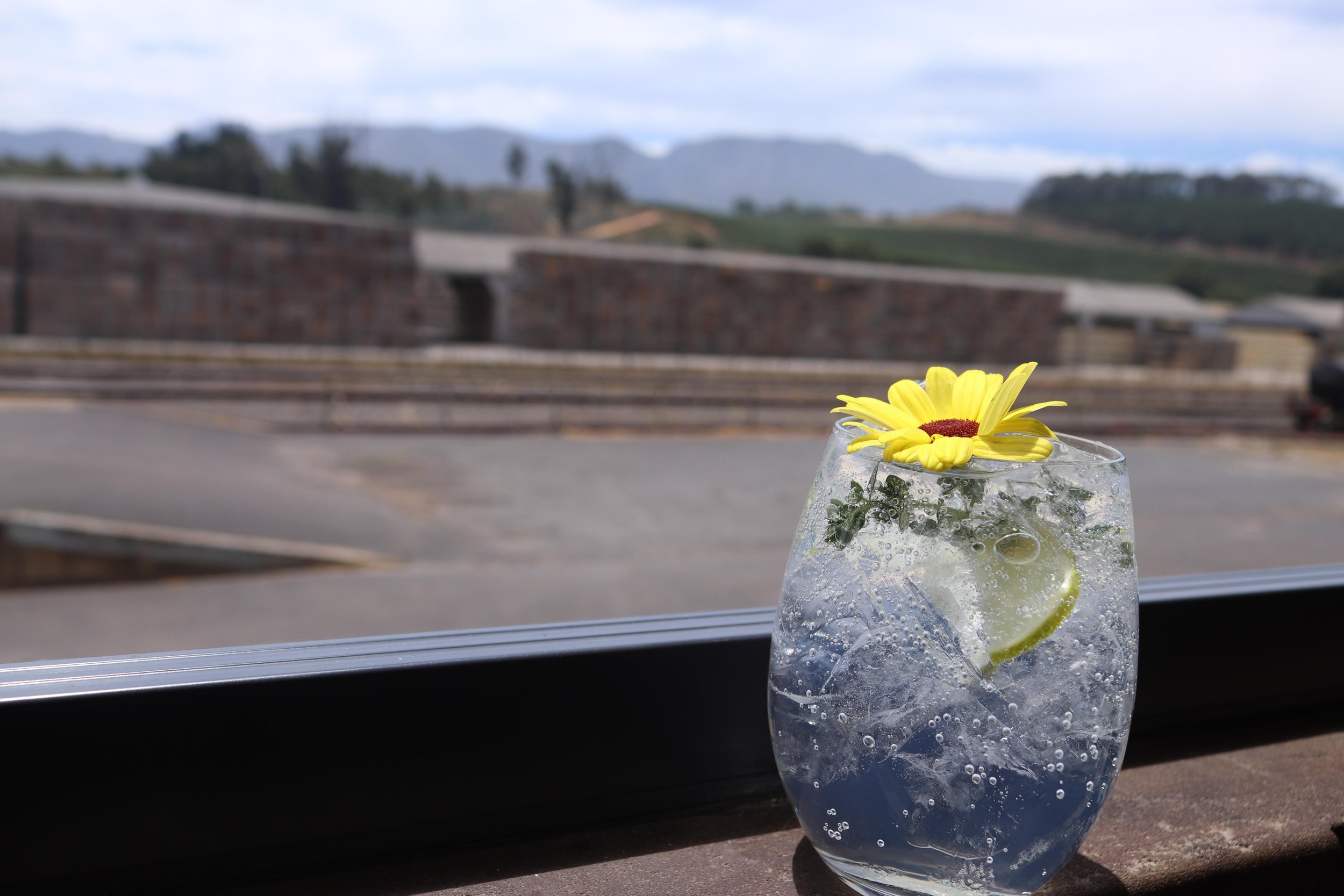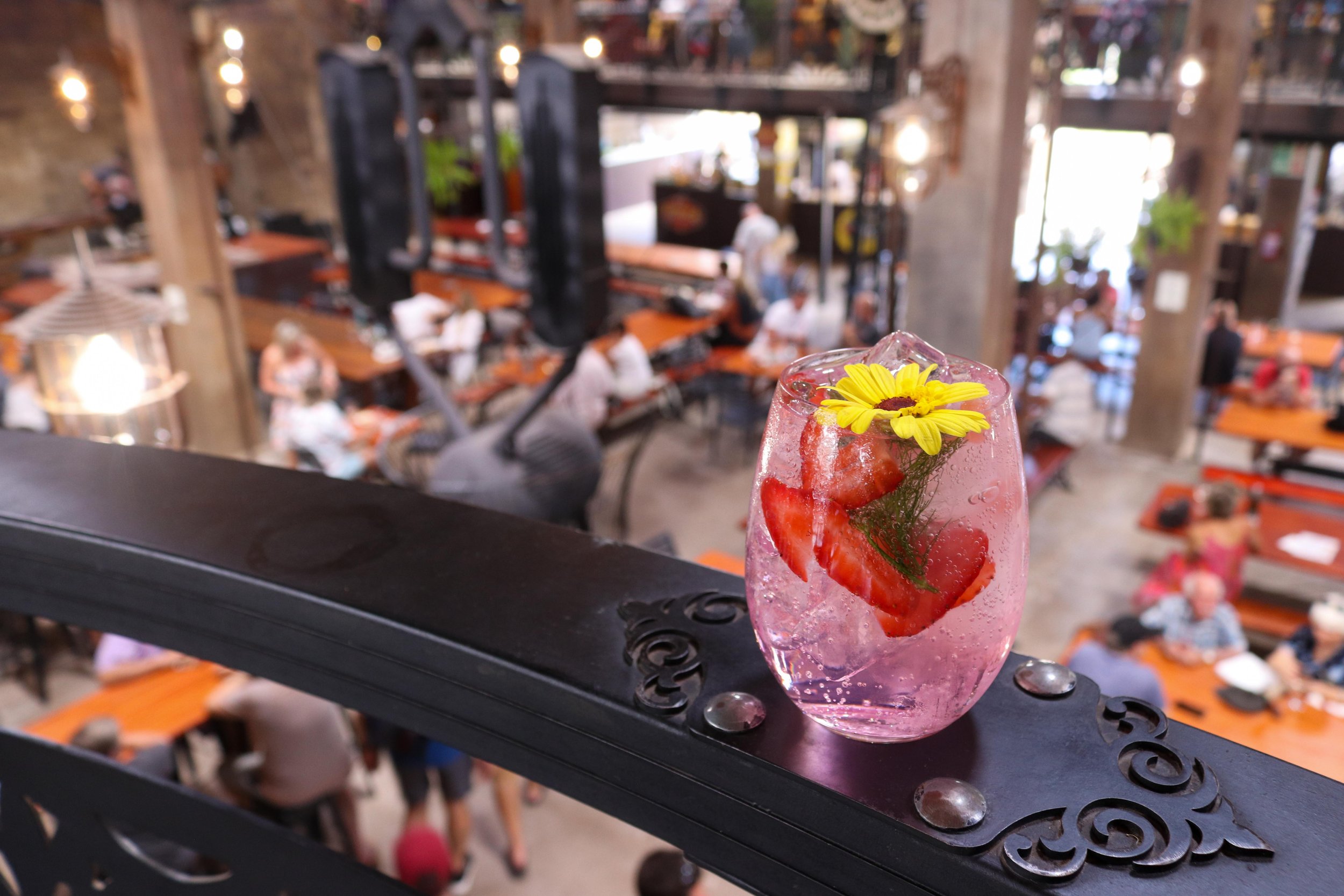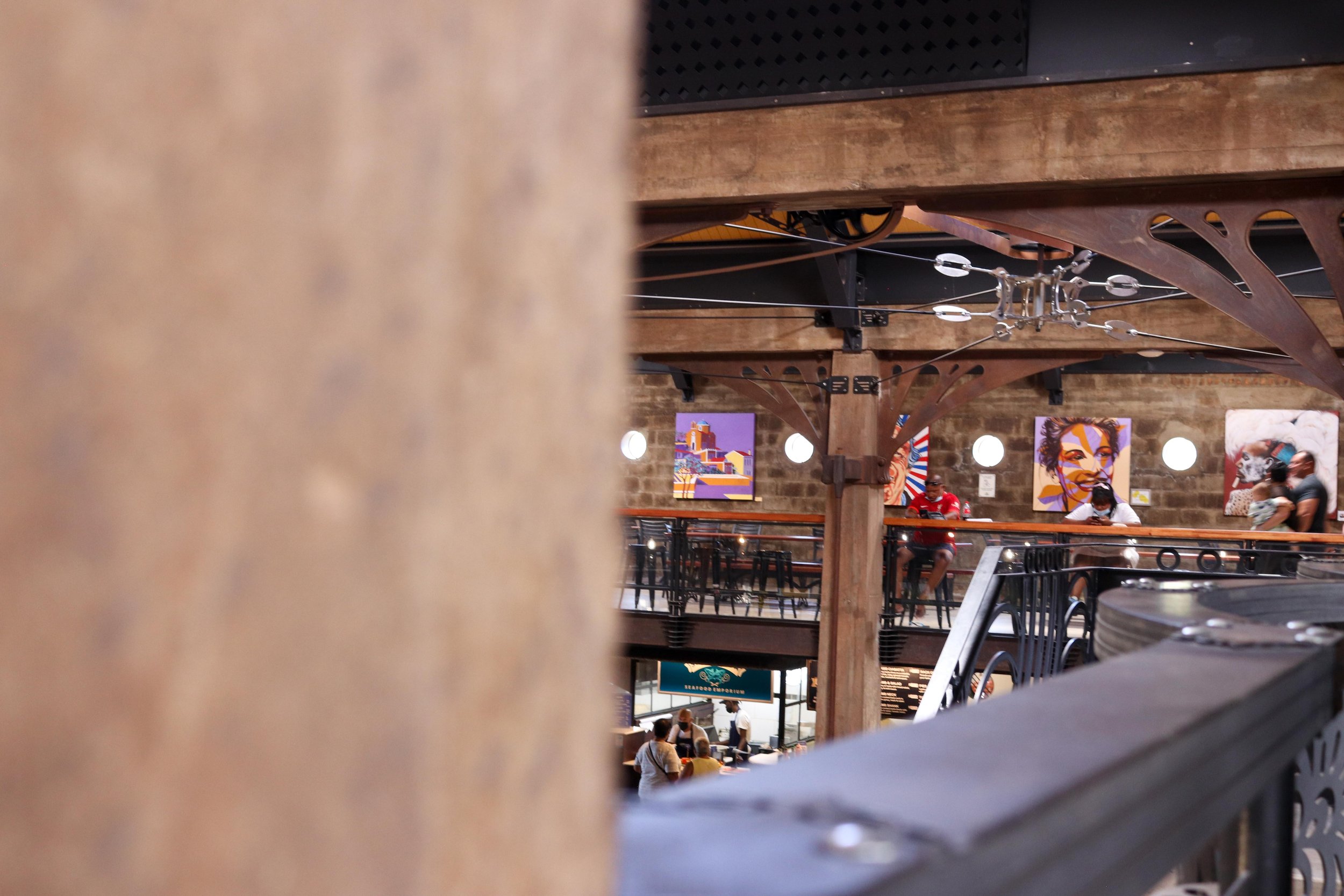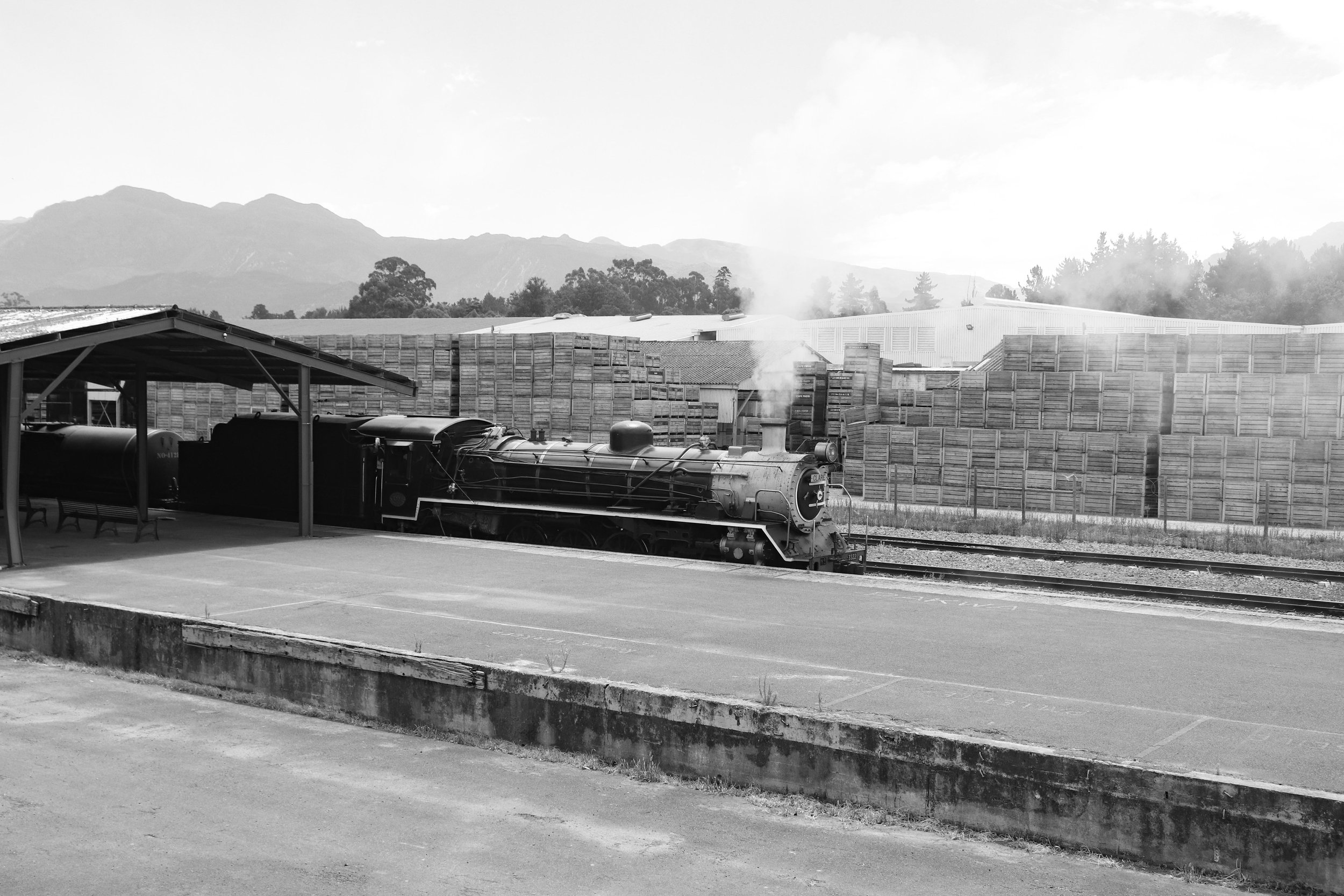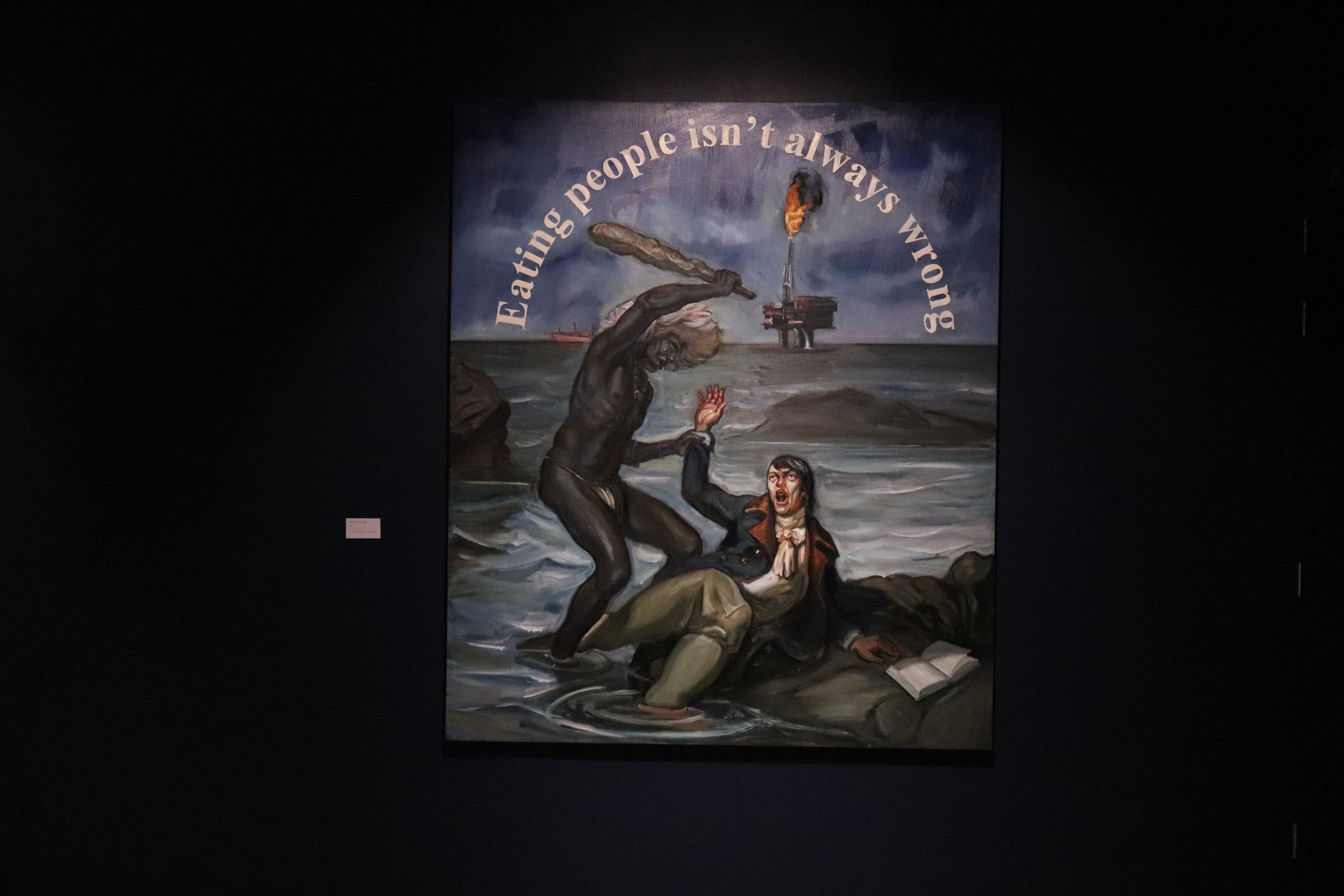One morning, I asked Andrew, “Are you ready to leave, yet?”
Andrew sighed, sipped his coffee and said, “No, not really, but I don’t know why.” He paused to think, “I still feel like I’m missing something important.”
“Mmm, yeah,” I say.
We contemplate.
“We have made a lot of friends, here, but none of them are black.”
“It’s true,” I said. “I don’t know what to do with that.”
We sat with that discomfort through Coffee With Kitty Hour and disembarked to attend the modern art museum within walking distance of Sonrisa’s slip. The art museum is an incredible space. Located inside a retired grain silo, the building is a work of art in its own right.
And, like all good modern art museums do, it makes you feel itchy under your skin about the “ways of the world.”
“Uhg, Modern Art.” Andrew said as we entered the first floor to view an exhibit made by a woman who is very “vagina forward” and also angry. In addition to her visual arts, she had video work that depicted her de-robing from a blood red dress in an open (and quite beautiful meadow), screaming like a banshee. As you walked through the visual art space, you could hear her screaming in a most distressing fashion for rooms and rooms away.
“What did you expect?” I asked Andrew.
The same artist wearing nothing but socks and red paint.
According to southafrica-info.com, as of 2017, South Africa had 56.5 million people, with “black” South Africans making up 81% of the total, “colored” people 9%, white people 8%, and Indians 3%. Even this description contains unfamiliar and uncomfortable language:
“Colored.”
This word, all but banned in the United States, is used freely as part of the South African vocabulary. It is not a slur here (thought it certainly has a difficult history), it is what they consider a “statement of fact”. “Colored” is any person of mixed race between South Africa’s black tribal contingent and anyone of any other race. Black + Indian. Black + White. Black + Malaysian, etc.
We were first introduced to this word in a grocery store in Richards Bay when we asked someone where something was, and that person told us without missing a beat “just past that colored man, there.” Even more surprising, the person who pointed us to the “colored” man, herself, had a significant level of melanin in her skin.
South Africa is trying to emerge from its colonial history. A place with a native population of several tribes, wars were fought to take over its fertile land and powerful seacoast position by Portugal, the Netherlands, and England. These European colonizers brought indentured servants and slaves from Malaysia, Indonesia, India, and Madagascar to build their colonies, and eventually, descendants of all these groups came to be born on South Africa soil. Who is a rightful child of Mother South Africa? In 1948, the “Purified National Party” through support of the minority population of European descendants enacted a series of laws to reflect the already wide practice of segregation. These laws were known as Apartheid.
Before I go further, while this article will give you some high level details we learned about the situation while we were in South Africa, I also enjoyed and highly recommend a book written by Nelson Mandela: The Long Walk to Freedom: The Autobiography of Nelson Mandela. There is no replacement for reading a direct account of the experience. Also, FYI, I don’t have any affiliate link with Amazon. I make this recommendation out of the pure desire to share the words of an incredible man]
While Apartheid is far more complex than I have the capacity to understand, let alone write about, it can be compared to the U.S.’s equally failed legal concept of “separate but equal,” also what we sometimes refer to as the “Jim Crow” laws. In theory, both these ideas were that white people and people of any other color could have all the same privileges, just in their own corners. The problem with this idea is that in South Africa the luckier descendants of Portugal, Netherlands, and England held all the fertile land and the historical wealth. How can a society of “others” create a “separate but equal” situation when the resources and funding were all held somewhere else, originally taken by cannon and bayonet while the “others” were shackled and chained as slaves/indentured servants or killed by war?
The U.S. has been on a long road to unravel our own difficult history and build a new future. It started with the fight to end slavery (late 1800s), continued with the battle for suffrage/right to vote (early 1900s), continued still through the 1960s fight against the notion of separate but equal, continued through the 80s and 90s with employment discrimination laws, continues today as we grapple with challenges around police action and incarceration rates. Continues, continues, continues…
One major difference I can see, though, is that in the U.S. the majority population was oppressing a minority population. Those in control had numbers on their side, and even with that felt threatened enough to oppress. In South Africa, during Apartheid, only 20% of South Africa’s population was white. That tiny fraction of the country used the Apartheid regime to oppress 80% of the population.
South Africans fought against this regime. We all have heard the names Nelson Mandela and Reverend Desmond Tutu and countless others who protested, fought, lost their lives, lost their freedom, lost the peace of living a life with their families in favor of spending their time fighting. The fight against Apartheid started in 1948 when Mandela was a young man, forming and working in ANC Youth Leagues to resist the racist regime. Apartheid did not end until 1990. The new government was not put into place until 1994 when Mandela was elected President by a Democratic process. It is all very recent history.
Until then, it was illegal for the races to interact with each other. Illegal to marry. Illegal to live in the same neighborhoods. Illegal to just be a friend. If those who led the Apartheid regime controlled the world, 90% of the beautiful friendships we’ve made across all our sailing miles would be punishable by imprisonment.
“You and I are pretty good at getting into places we don’t belong.” Andrew said that morning at coffee, “but here, it doesn’t feel easy to break through.”
In South Africa of today, everyone seems to mix. All are welcome in public spaces. In the malls, in the fine dining restaurants, in the yacht clubs and the golf courses, everywhere we went there were people of all shapes and kinds. Everyone interacted with each other in friendly ways. But, Andrew and I also felt corralled into spaces “meant for us” whatever that means. “If you stay in the V&A Waterfront you are pretty safe. If you stay at the yacht club, you are pretty safe. If you stay here and didn’t go there, you could be safe. Don’t pick up hitchhikers, don’t drive through Zulu villages. Stay out of the informal settlements unless you are on a guided tour, so you can stay safe.” We heard it over and over again.
And, we saw it. The wealth disparity in South Africa can be shocking. The fine dining, the beautiful wine, the beautiful scenery, luxurious accommodations, the large catamaran ship and luxury car building industries – it is all set in juxtaposition to large populations of tribal villages, informal settlements, and populations of homeless living on the street.
We enjoyed a ride through the countryside on a historic steam train to visit the Elgin Steampunk Market. We drank champagne with our fellow sailing friends Chris and Jen as miles and miles of informal settlements blurred by, the people coming out of their houses to waive at us and motion for the train conductor to hoot the steam whistle.
“Bah!” I said, “I just don’t believe it. An informal settlement is just a neighborhood full of people building their families and lives like anyone else. I’m sure there are bad eggs, but there are bad eggs everywhere.” [Case in point: after we left our own little “sailing neighborhood” we learned one of the catamarans docked there had been seized by the government for drug running.]
South Africa’s informal settlements started during Apartheid when it was illegal for black people to transit urban areas. Even worse for “colored” people, it was illegal for them to either transit urban areas or live in the areas reserved for fully black, South African tribal members. And so, unplanned developments sprung up in the space between tribal land and urban areas, as close to employment as those trying to work could legally live.
The government wasn’t going to contribute to city infrastructure. Worse, during Apartheid it was illegal for people living in informal settlements to build roads even if they could pull together the resources. No electricity, no plumbing, no streets, no addresses for mail. They stretch on for miles and miles, like any other neighborhood would. They are communities. Nelson Mandela and his young family lived in an informal settlement when he was a young man trying to build his life.
This question – how do we break through to meet people? - has never occurred in all our prior travels. Usually, we arrive at a place and it happens without much trying. People sweep us up into their world. We’ve made incredible friends, had unforgettable experiences, and feel steeped in a place’s culture just by showing up and staying a while. Here, that strategy has served us well again and we’ve met wonderful friends representative of 8% of the population. For the other 92%, we’ve had friendly interactions during the course of commercial exchange, but we hadn’t found a natural opportunity to enjoy long conversation that flows into the meaningful.
This shifted a little when our cruising friend Austin arrived at the V&A Marina and he introduced us to his girlfriend, a local from Cape Town. She told us about the business she owns and runs, to help solve one of South Africa’s bigger problems right now: a shortage of consistent electricity. South Africa’s general population has increased its wealth over the last twenty years, with far more people able to purchase and consume electricity than before. The government, however, has failed to build up or keep up the existing electrical infrastructure in powerplants and the grid. There isn’t enough electricity, and South Africa experiences rolling blackouts as a result. (Much like California in the Summer.) Most businesses here have generators they fire up, powered by gasoline or diesel fuel to keep the lights on at the mall. Austin’s friend runs a business selling and setting up solar power systems for businesses, individuals, and she is hoping to expand into government infrastructure.
The conversation took its natural course into the question “what was it like for her growing up in South Africa?
“I remember being subject to the ‘pencil test as a child.’” She told us.
“The pencil test? Like, to test your hair?” I said.
She nodded, but worse than that, it was used to test where in the Apartheid regime you are allowed to fit. “They would take a pencil and place it in your hair. They would time how long the pencil would stay put. For a certain amount of time, you must be categorized as ‘black’. Another amount of time ‘colored.’” Under Apartheid’s Race Classification Act and the Group Areas Act, it was illegal for these different categories of humans to interact, children whose pencil test indicated they were different from others in their families would be moved out of their “location” and placed with their category of people. Let that sink in. If your pencil test result is different from your mother’s…
“How old were you?” I asked.
“Probably eight or nine,” she said.
This woman is my age now. Anti-Apartheid Leader Reverend Desmond Tutu, the man who first called South Africa the “Rainbow Nation” was alive when we arrived in Cape Town, and we were there to mourn his death. It is all s recent. And, for me, it feels like South Africans have an uneasy truce with that history, each other, and the rest of the world.
Apartheid was largely ignored by the rest of the world for decades. Meaningful sanctions started in 1977 when the International Rugby League banned South Africa from competing due to the Apartheid Regime. If we are honest, this is probably what ended Apartheid. (No Rugby!?) The rest of the world joined in economic sanctions, eventually, but not until 1986! This is the way about it.
One of the most striking art exhibitions in the museum of modern art was group of Life Magazine covers placed over the top a timeline describing the sequence genocide took place in Rwanda. Cover after cover highlighted the meaningless dribble-drabble of American politics, celebrity lives, and non-sense – silent about millions being murdered and left in piles of blood and flesh inside Rwanda churches, family homes, and villages. It went on for two years before the UN got involved in Rwanda. I thought we said “never again” after World War II; but Rwanda happened in the mid-90s, with the world writing off full blown genocide as “Africa and its Africa problems.”
We were in South Africa when their epidemiologists identified Omicron as the new circulating Covid Variant and the world’s reaction was “Lock down South Africa!” It made no sense. South Africa was not the first place to experience infections of Omicron, its scientists were just the first to identify that fact. Omicron was already all over the world at the time. And yet, journalism everywhere reported this new fact in ways that perpetuated the idea “a new variant is coming out of Africa.”
South Africans rolled their eyes.
South Africa – Africa generally – has its own experts, some whom could teach the world beautiful things. It’s not hard to praise Nelson Mandela. The man was imprisoned for 27 years of his life for protesting the Apartheid Regime. He didn’t see his children grow up, he longed to be near his wife, parents, siblings. And yet, he still walked free to advocate for and then form a government designed to include all South Africans - even those who belong in the same ethnic and racial groups those who imprisoned him. You might call him an inspired genius, but if you read his autobiography, it is clear he is human and it took immense soul-searching to arrive at that philosophy.
How to resist atrocities with strength and maintain your soft core of compassion?
Nelson Mandela would give an incredible TedX on that topic.
“Each of us is as intimately attached to the soil of this beautiful country as are the famous jacaranda trees of Pretoria and the mimosa trees of the bushveld - a rainbow nation at peace with itself and the world. ”
P.S. I don’t know, but it seems he might be rolling in his grave if he can see the way thing are playing out in the current government, now. But isn’t that the way of every government everywhere?
I don’t want to live in anything close to an Apartheid world. I enjoy our human differences like I enjoy a meadow filled with wildflowers. I want to wrap myself in the colors of my fellow wildflowers, and when I receive the inevitable compliment say: “the creative-genius is my friend from South Africa.”
For me, “true freedom” cannot be had with anything less.


